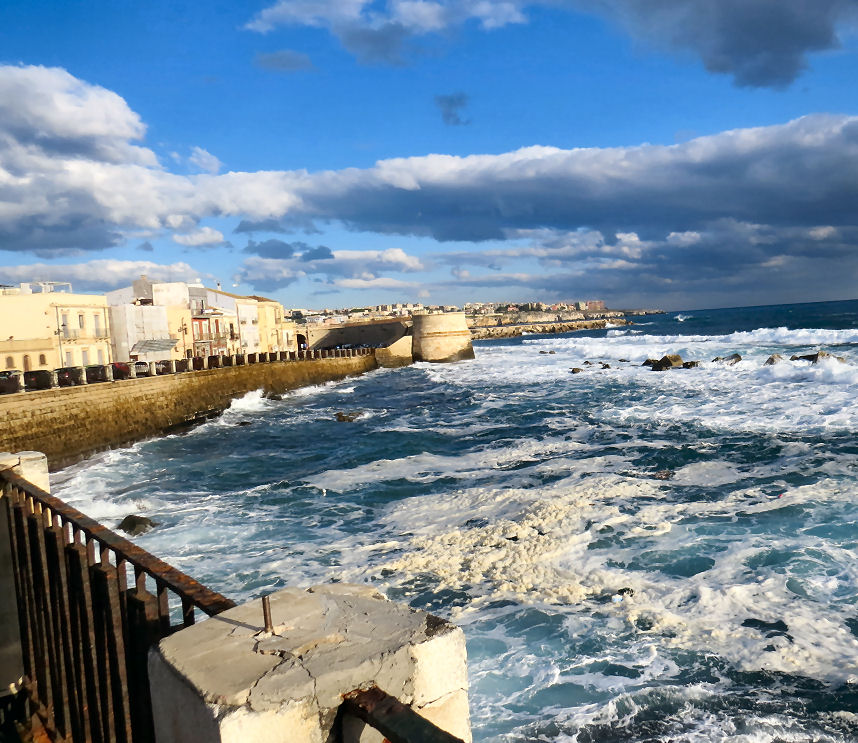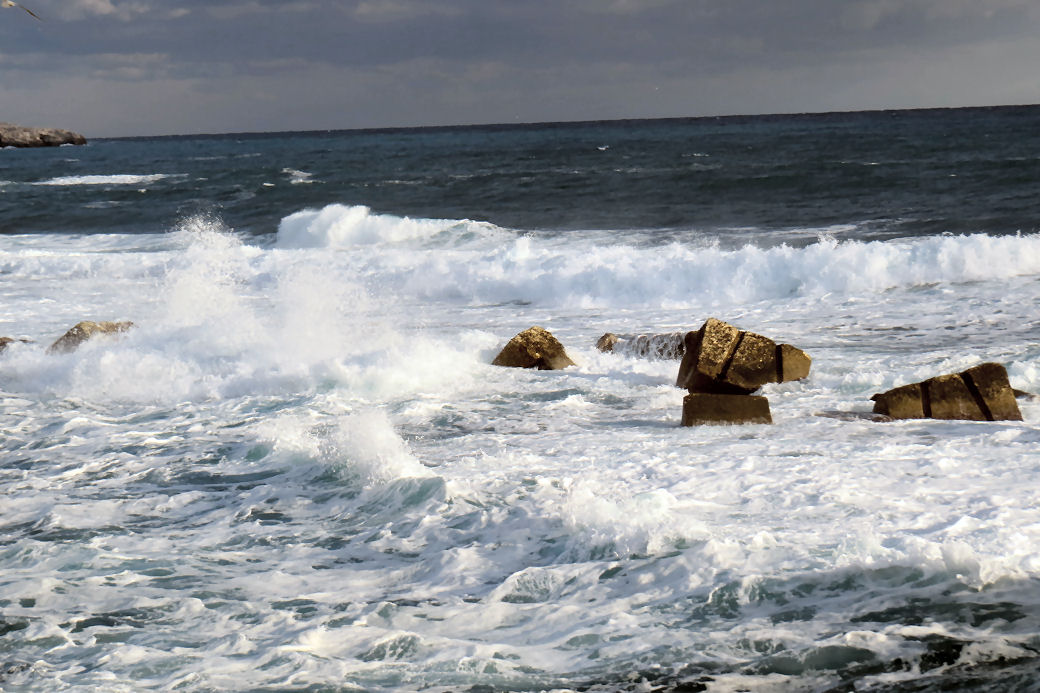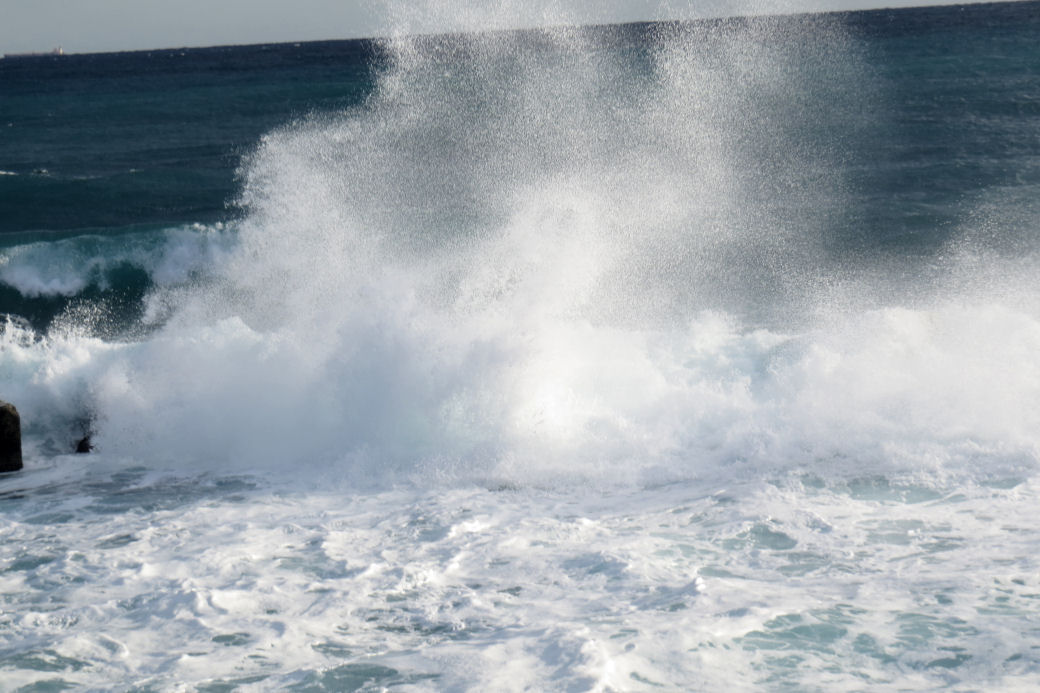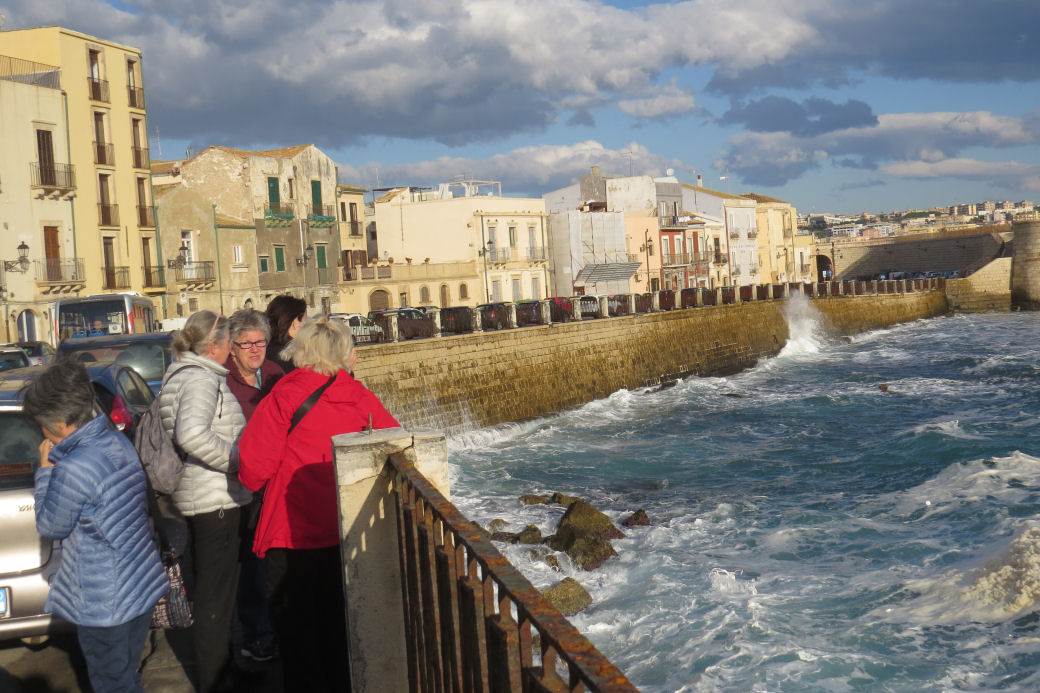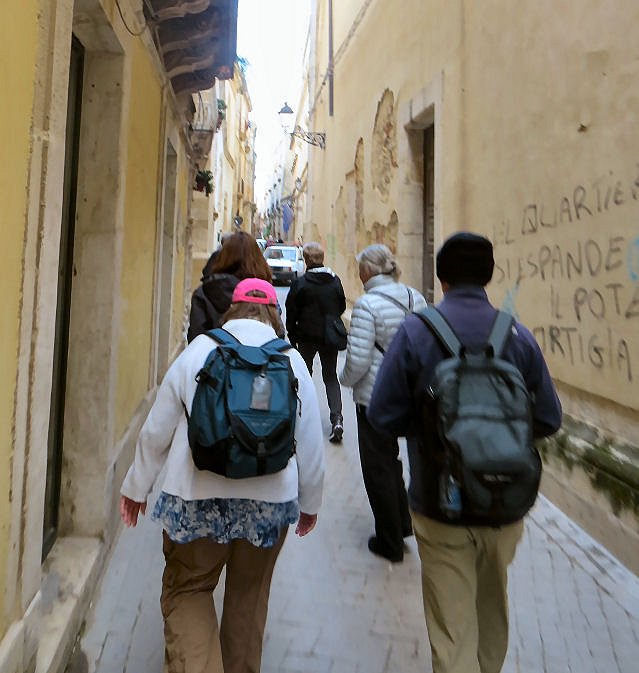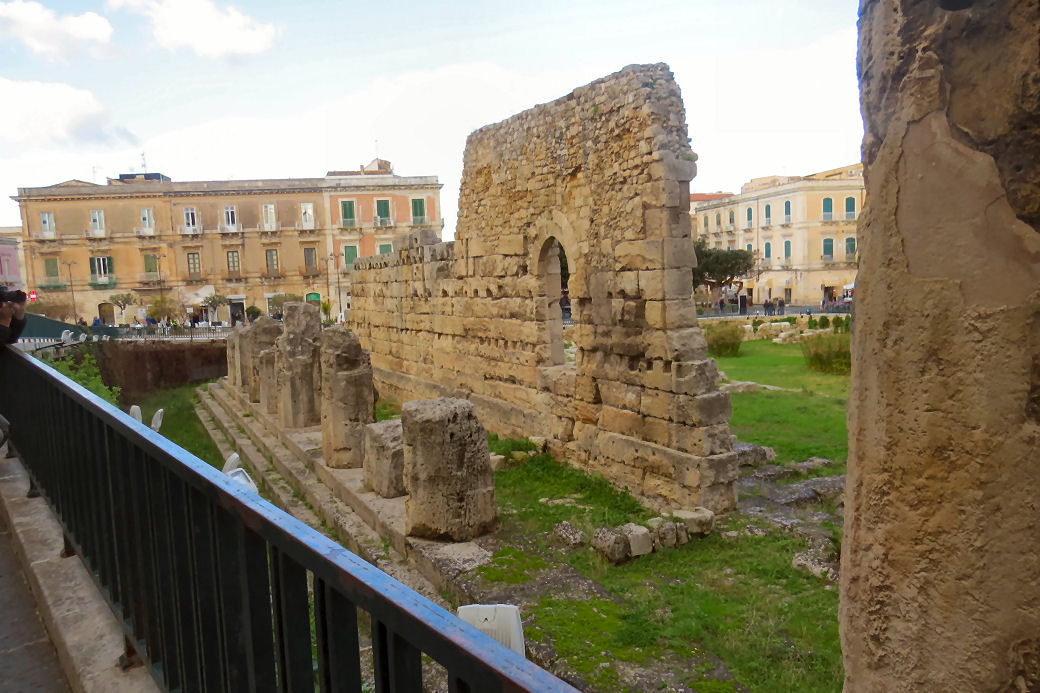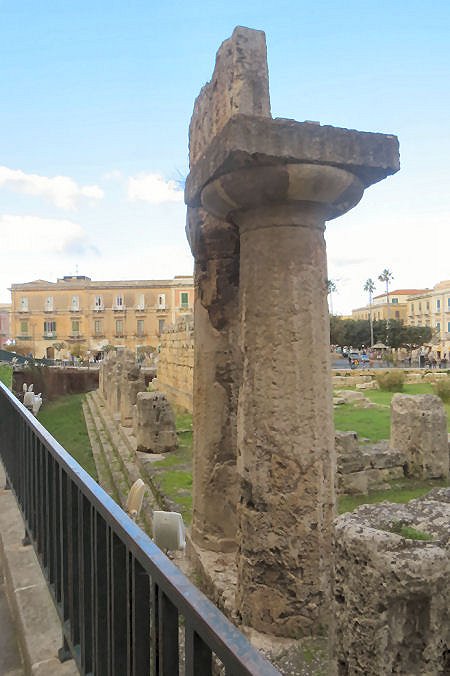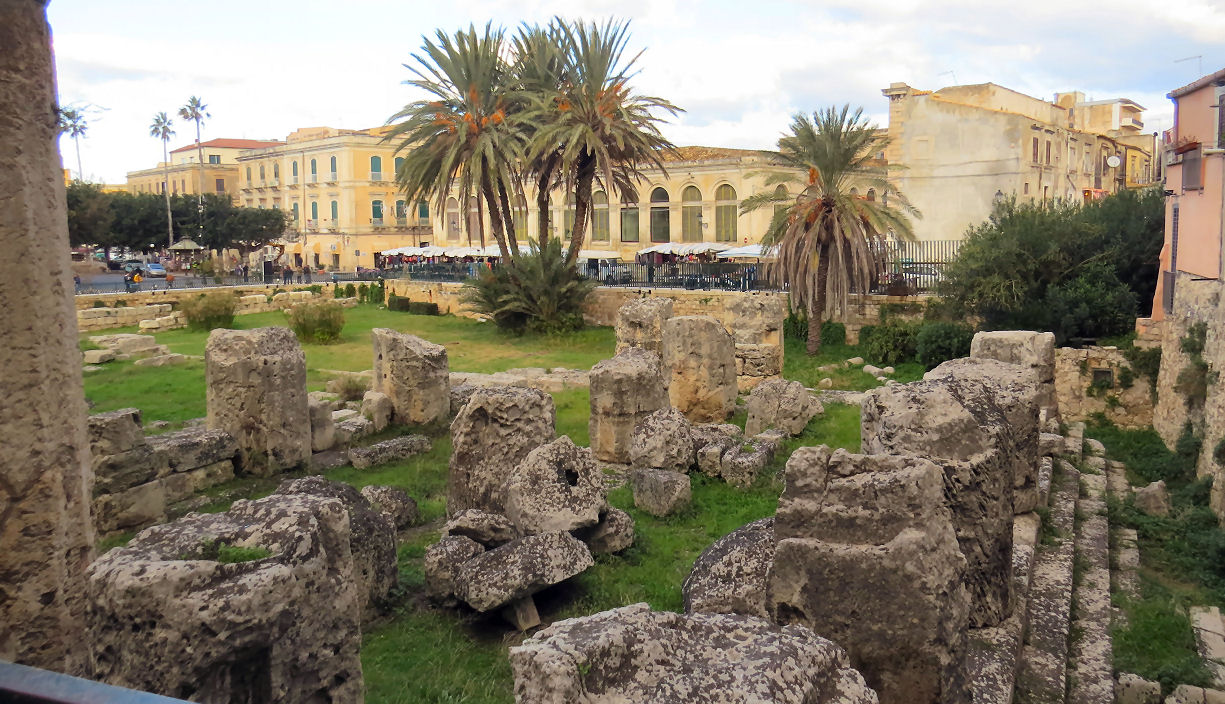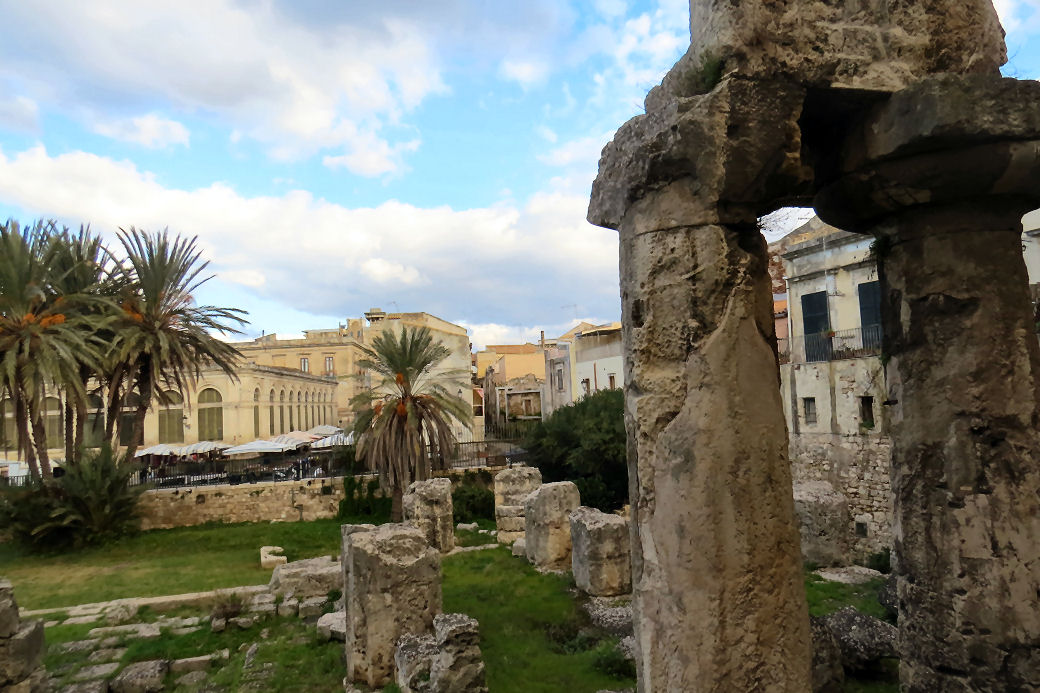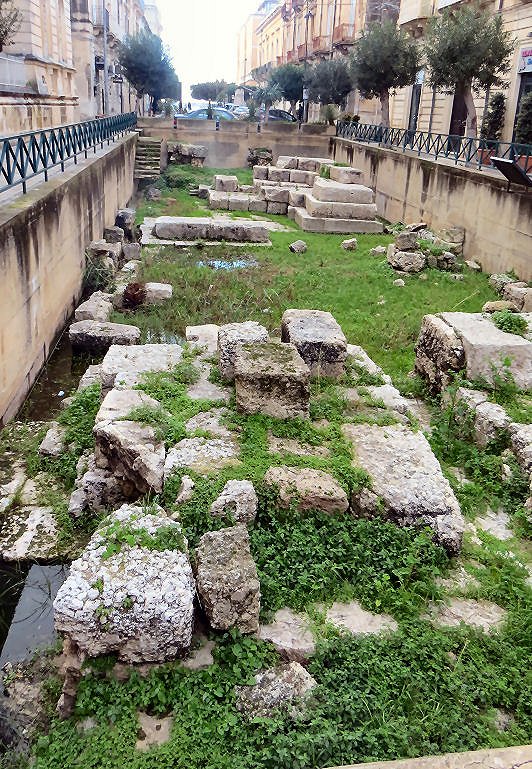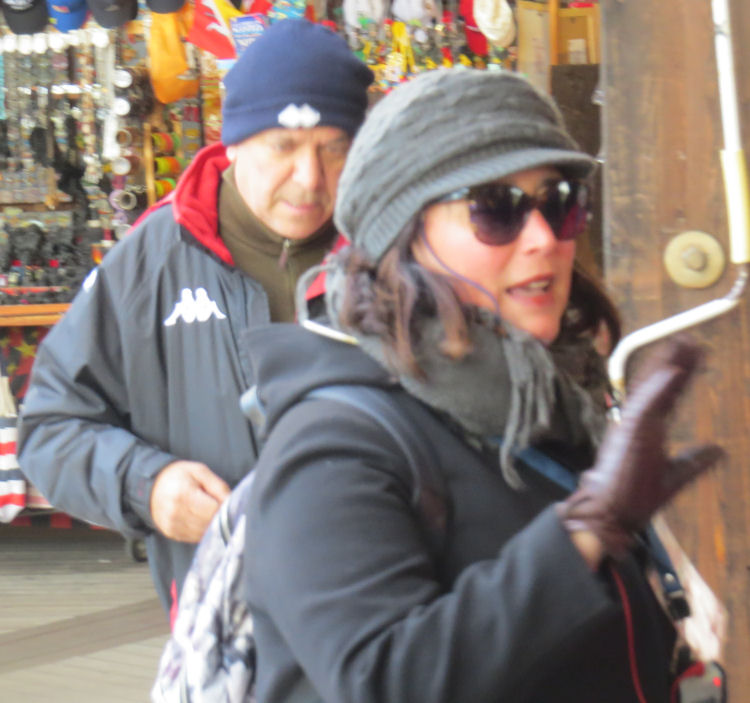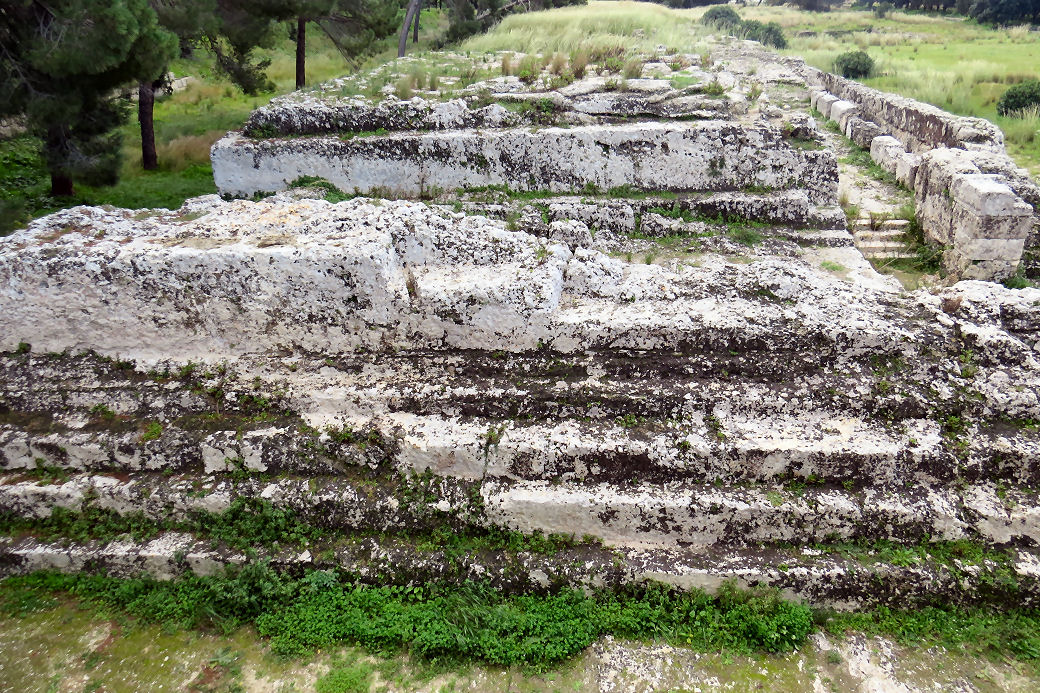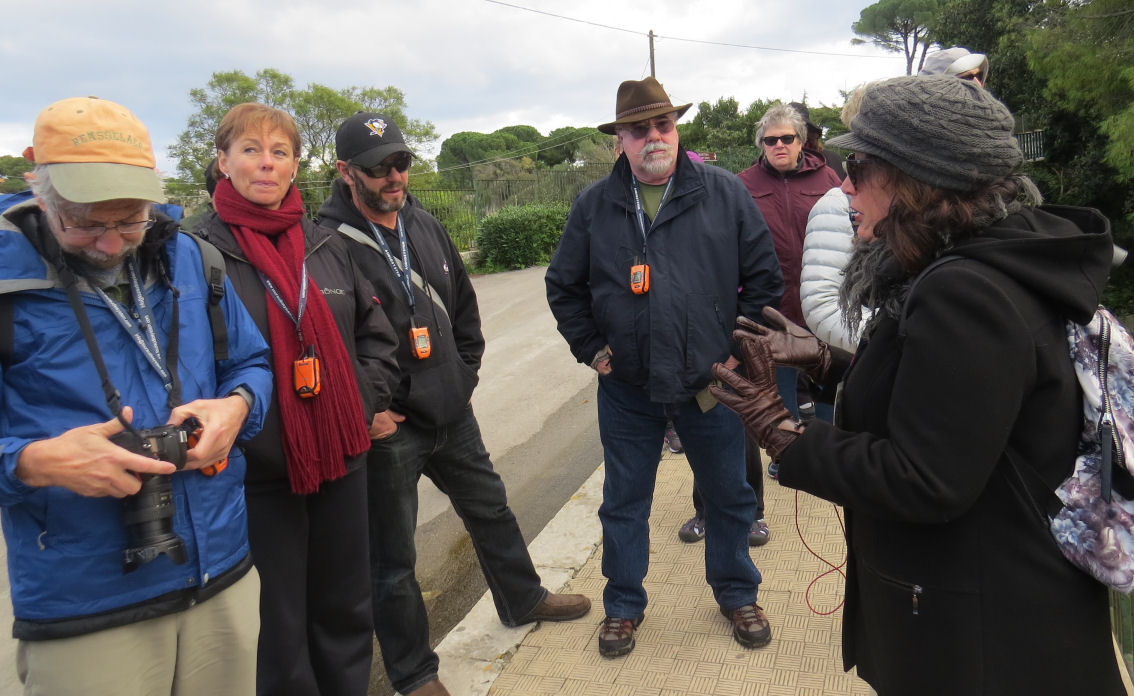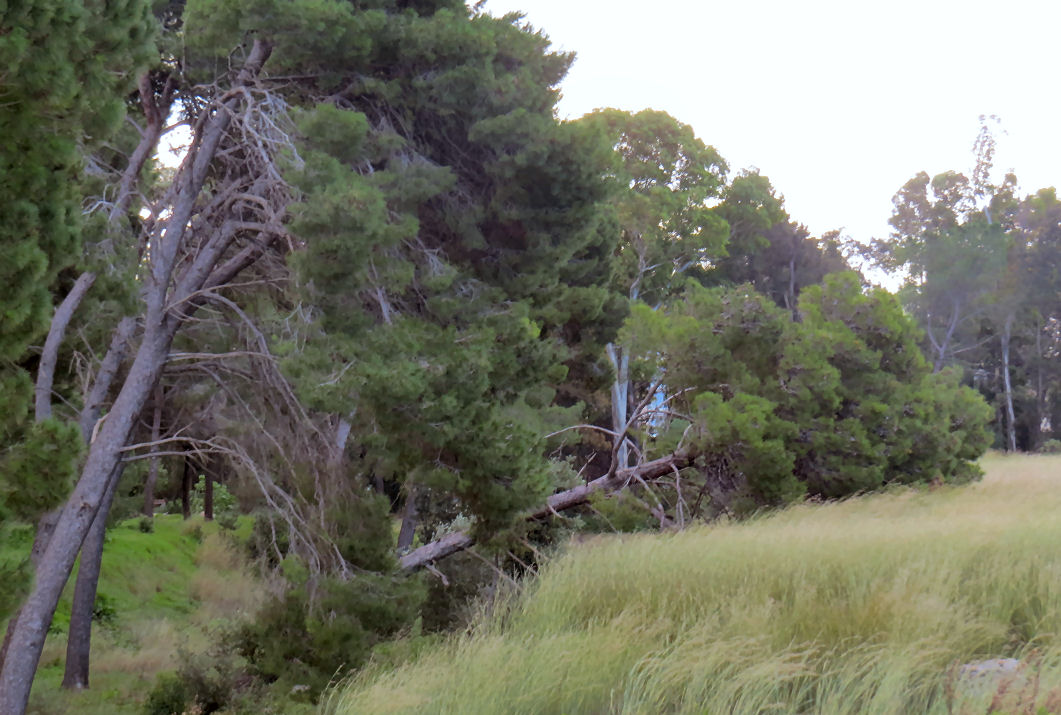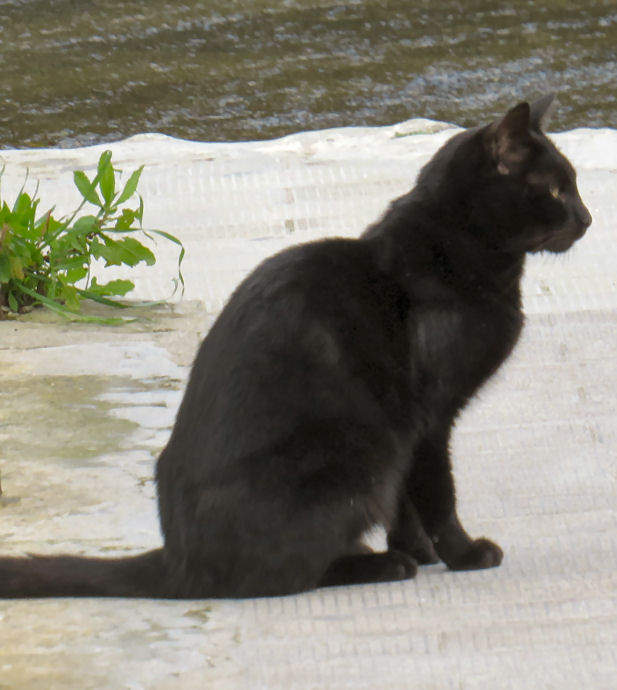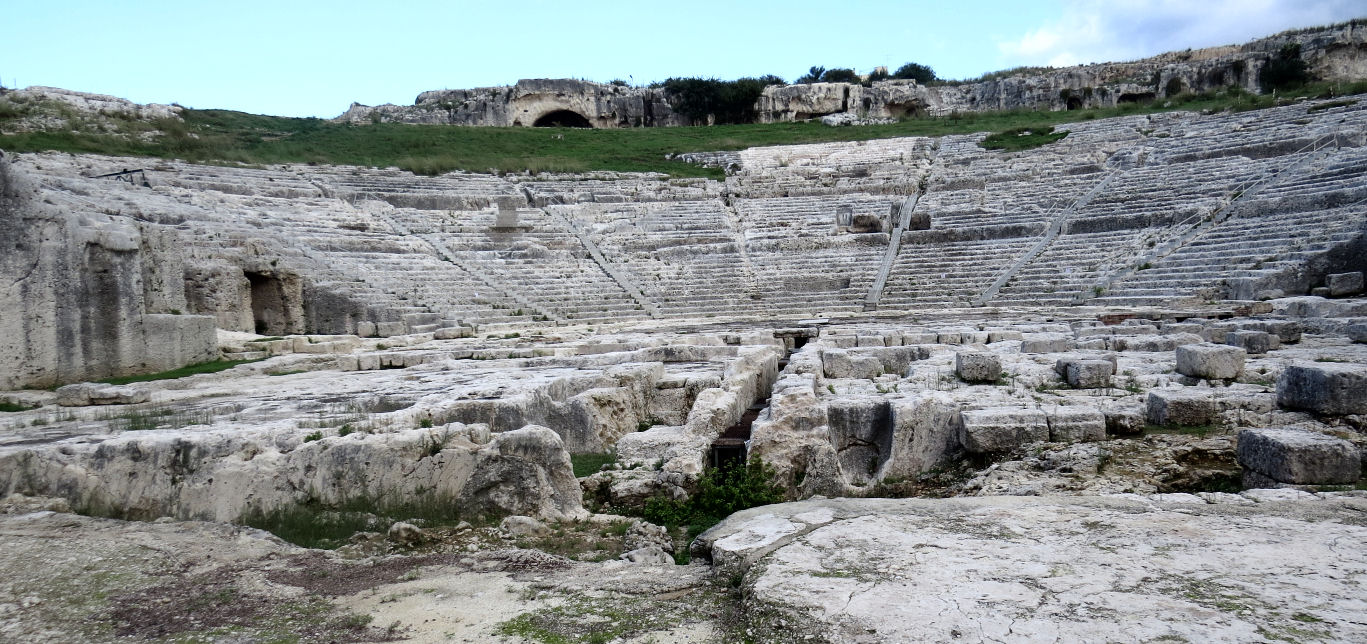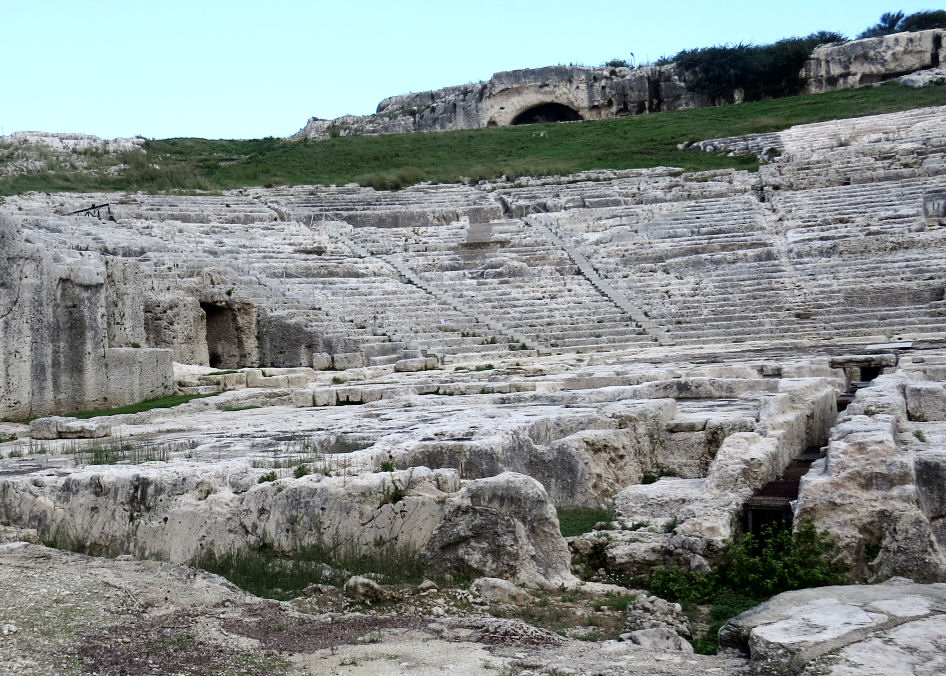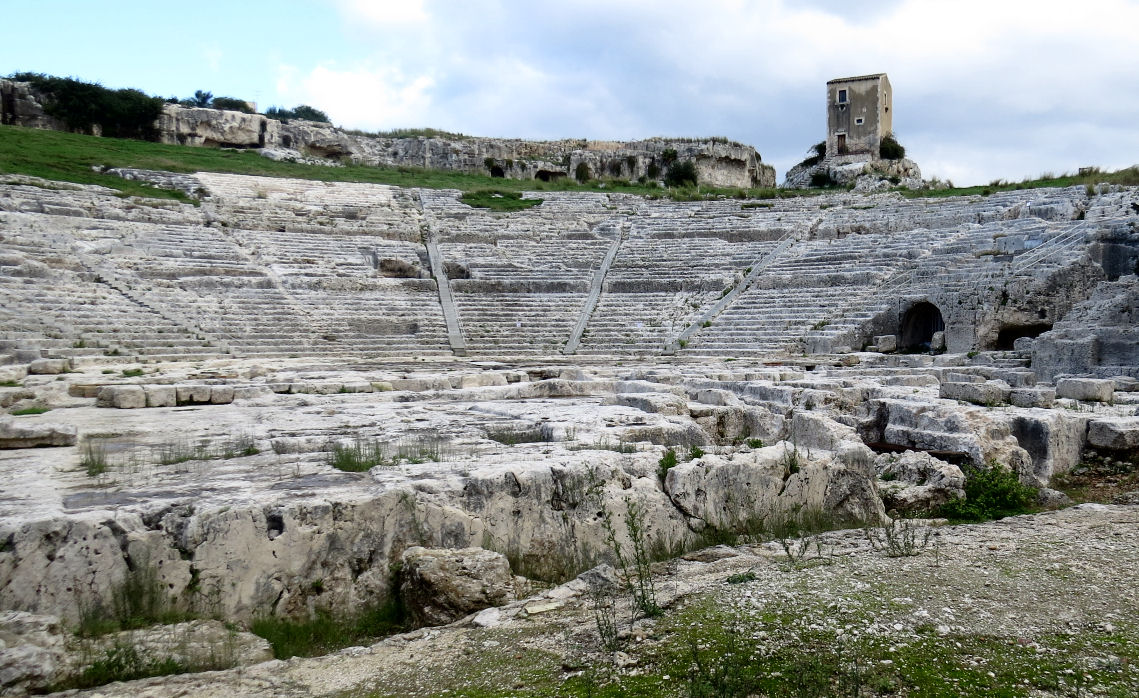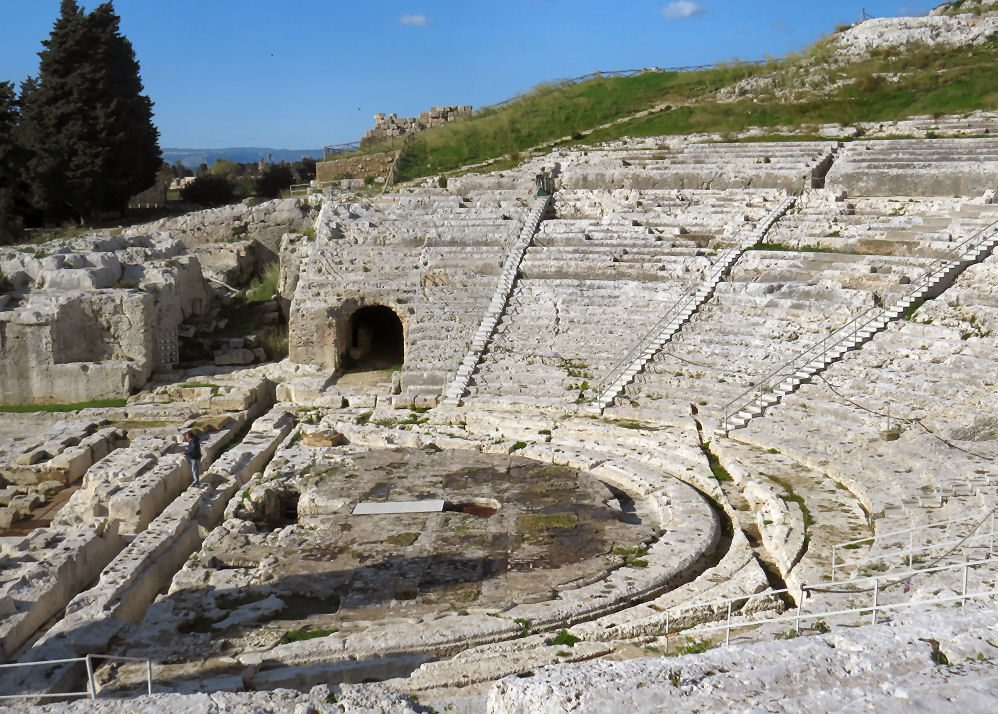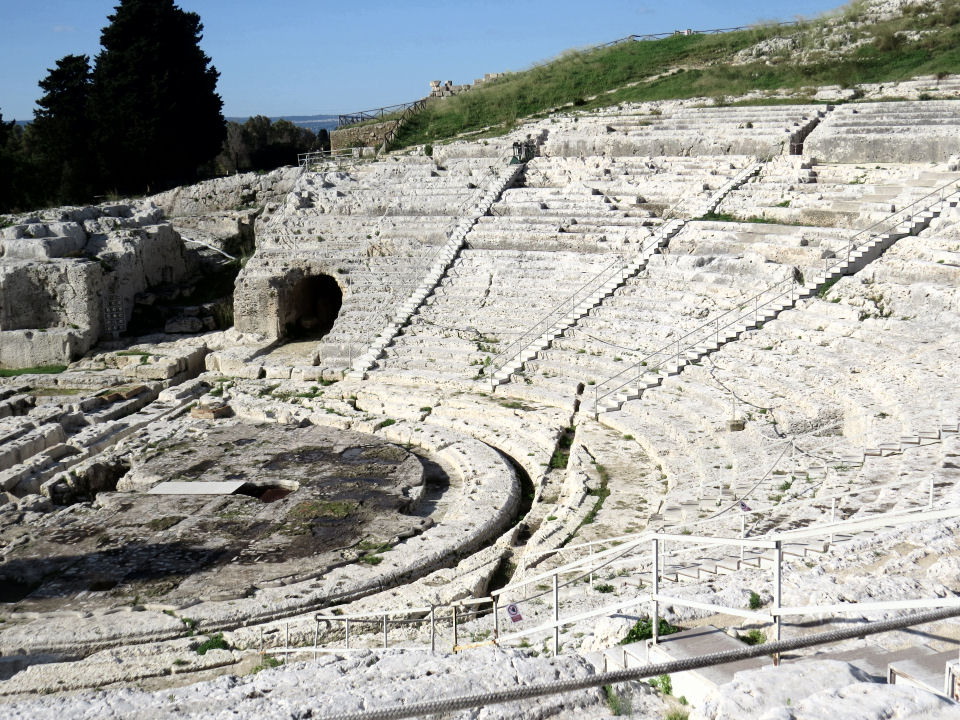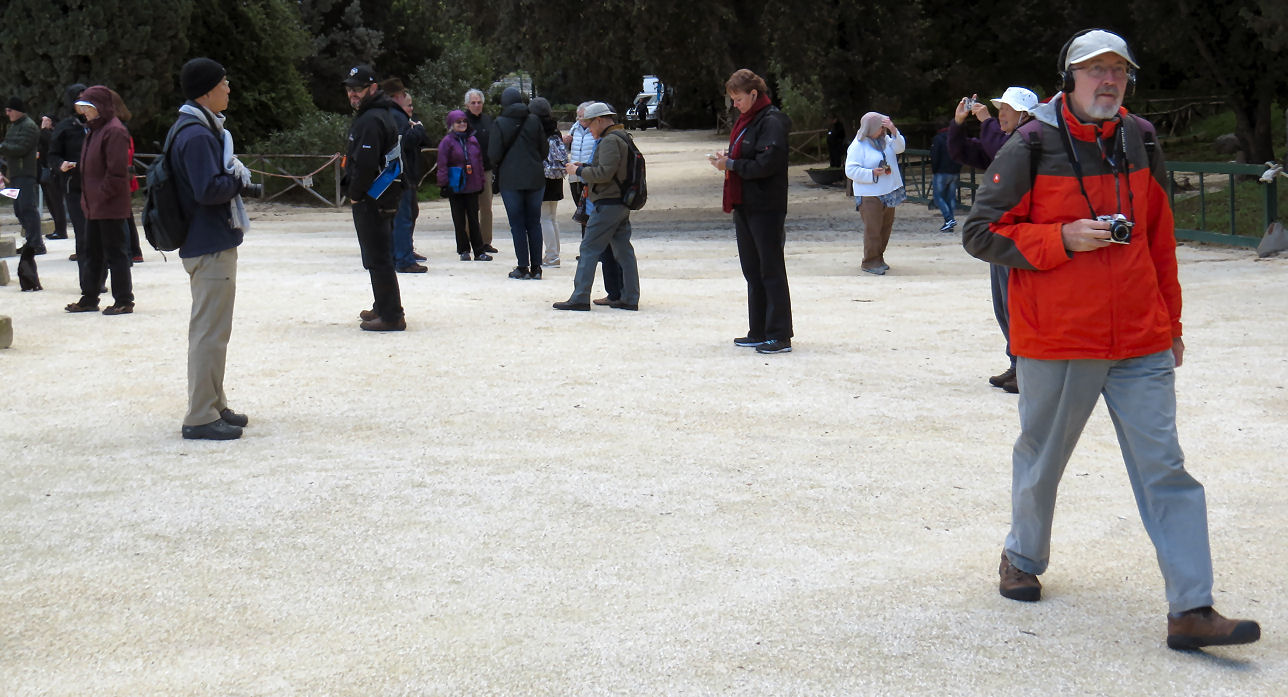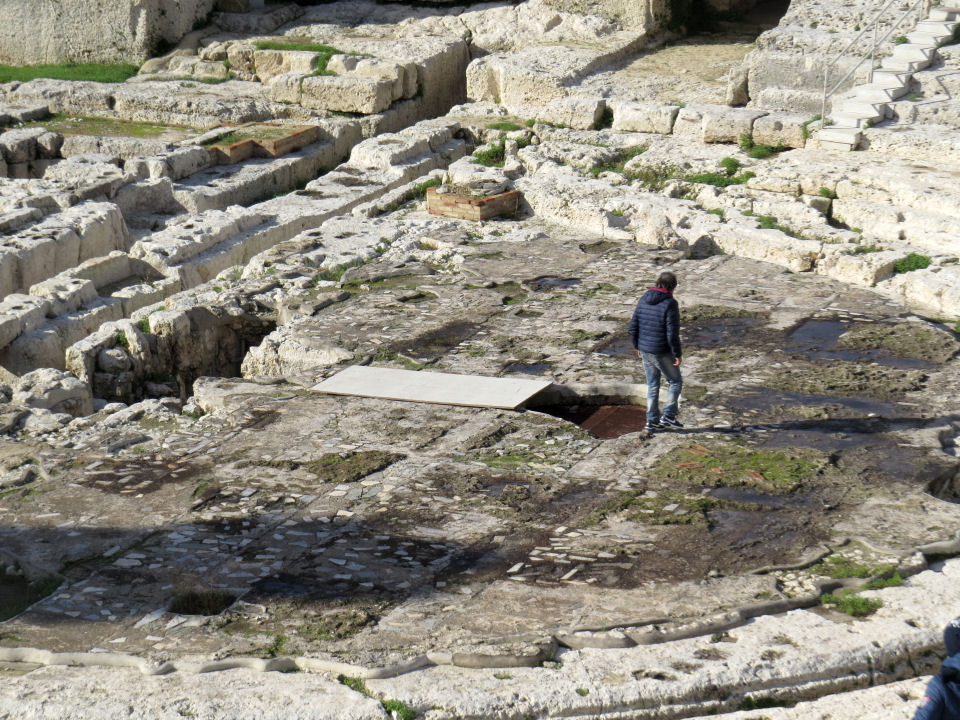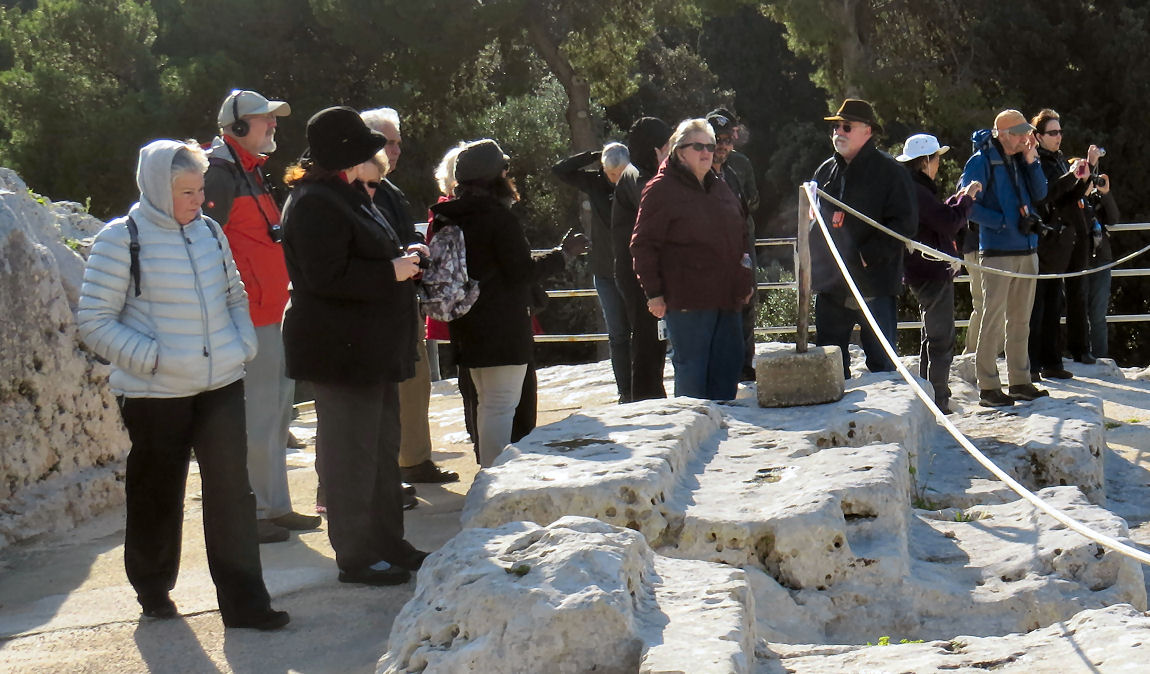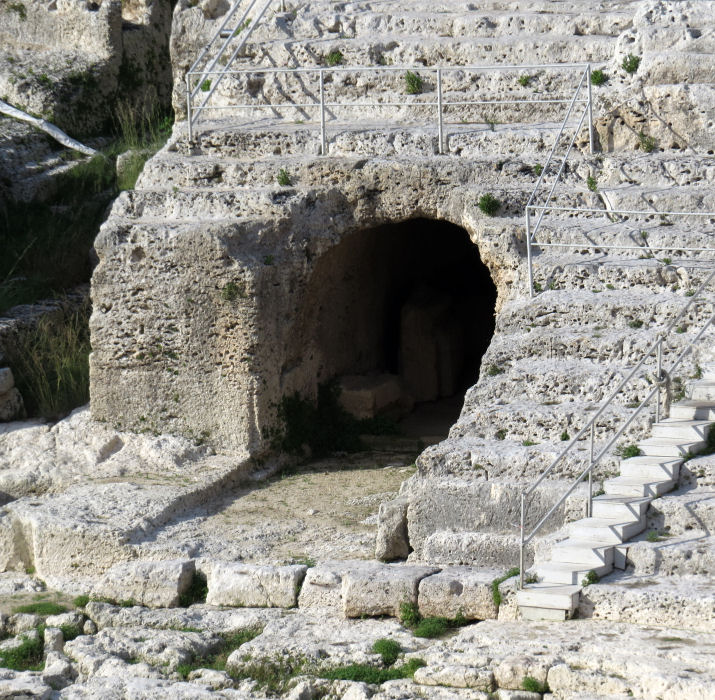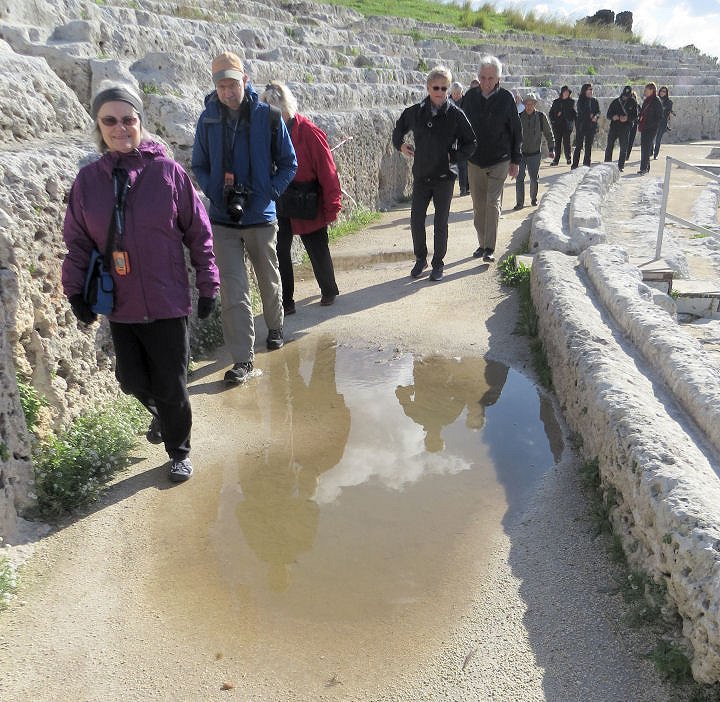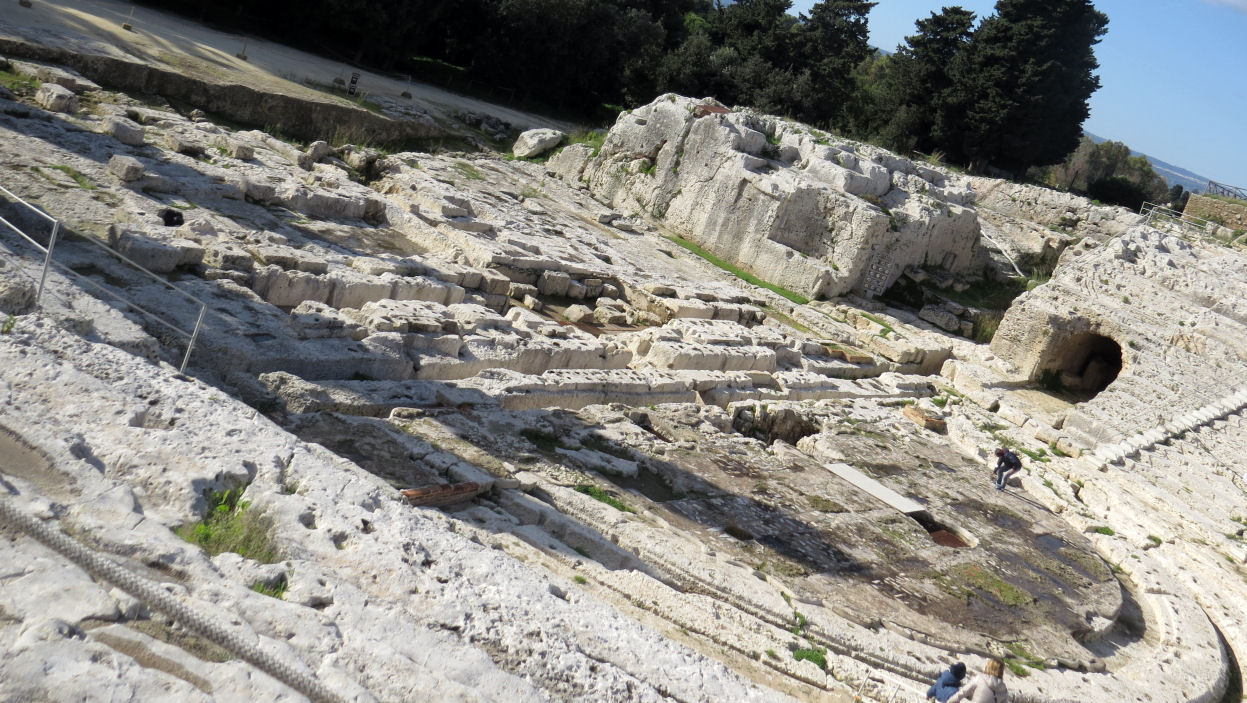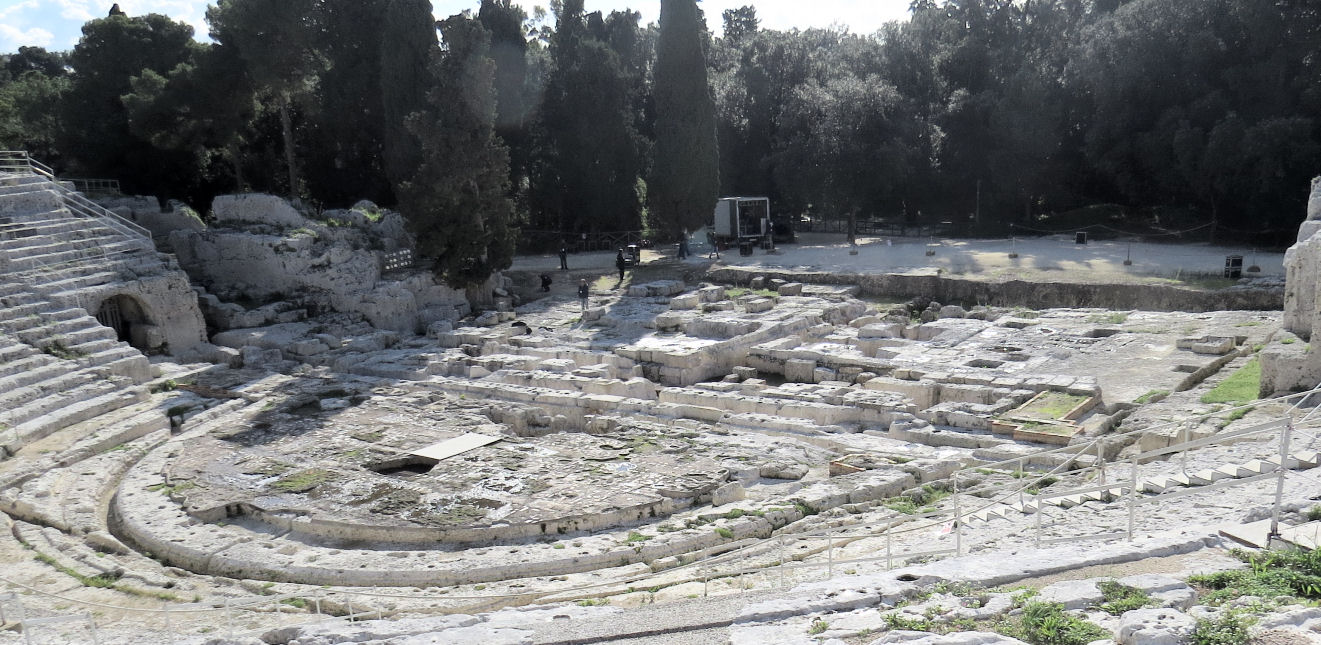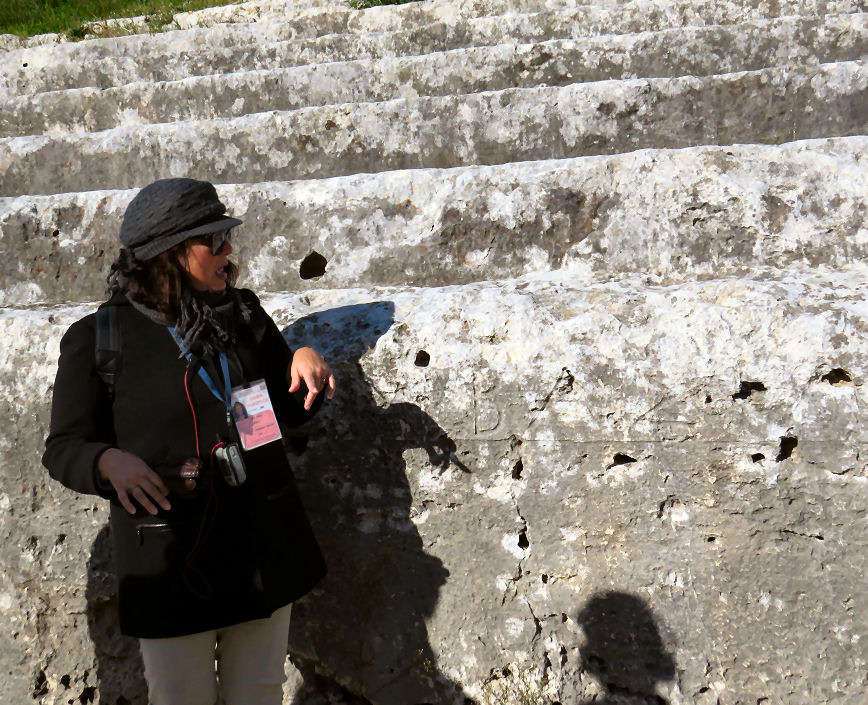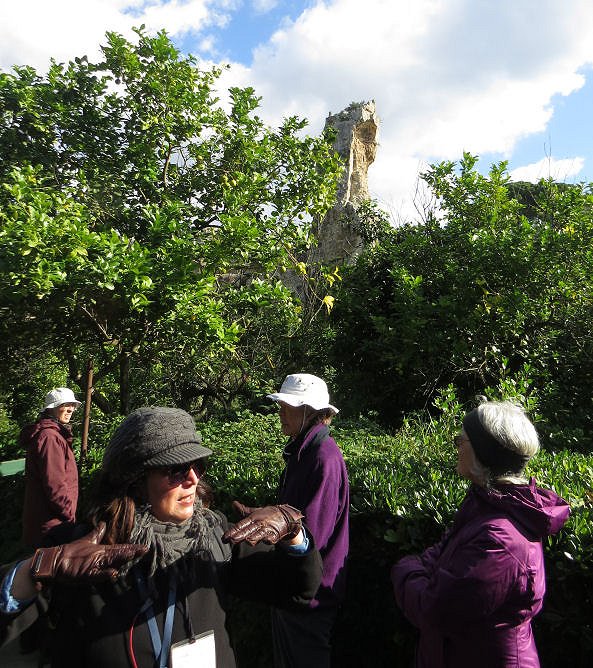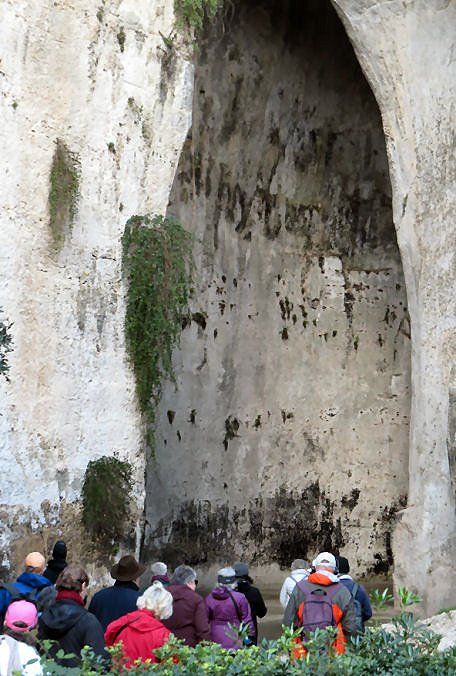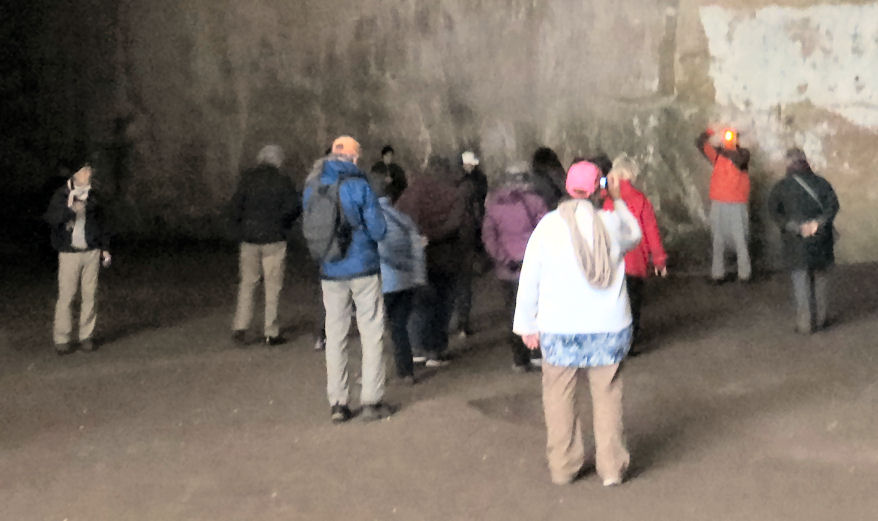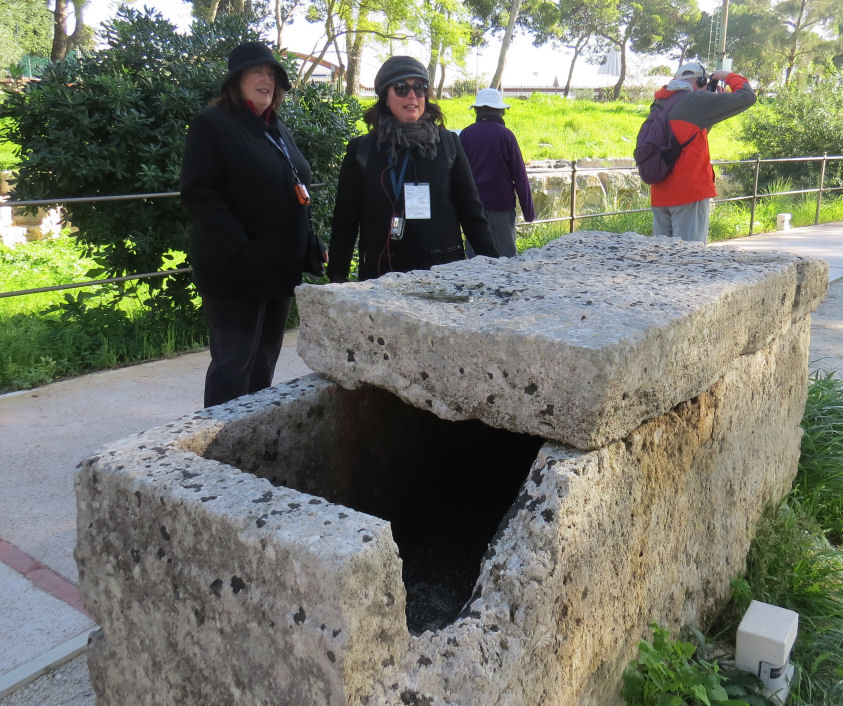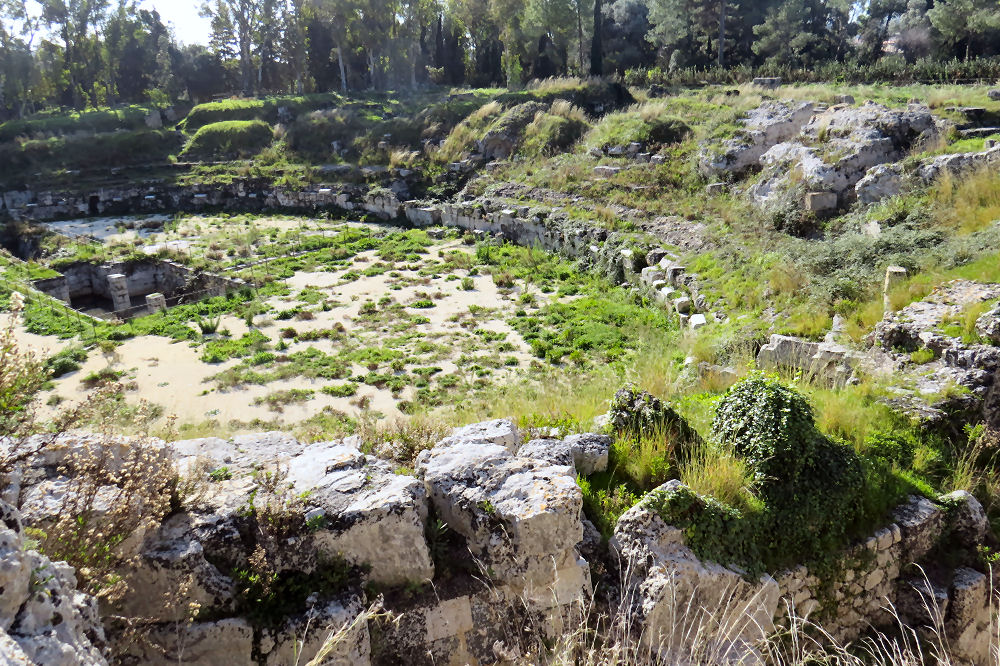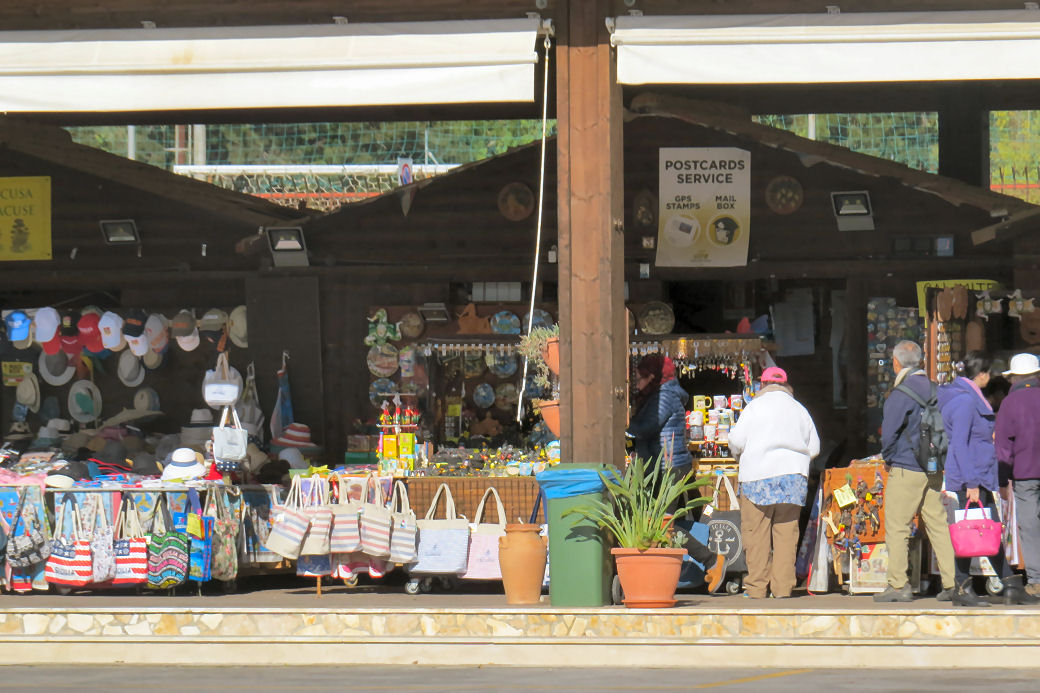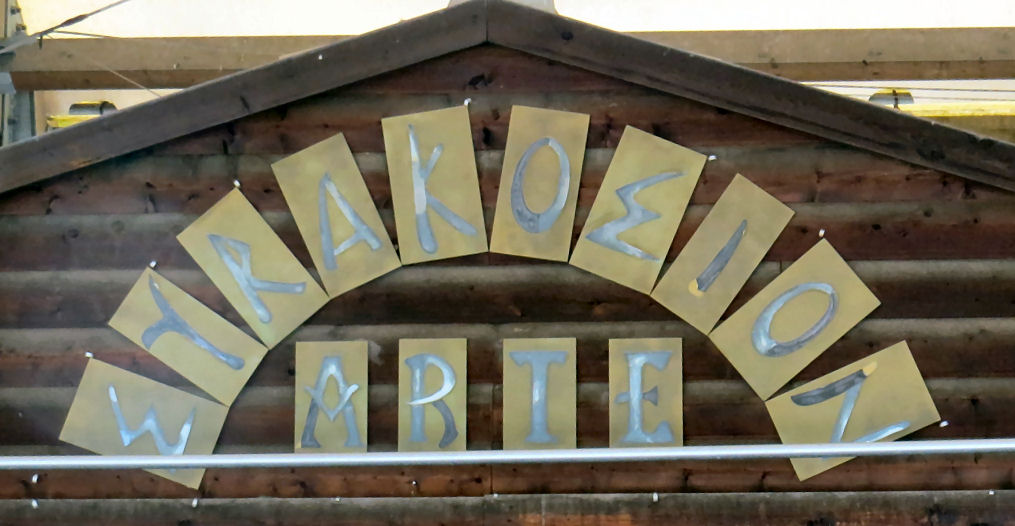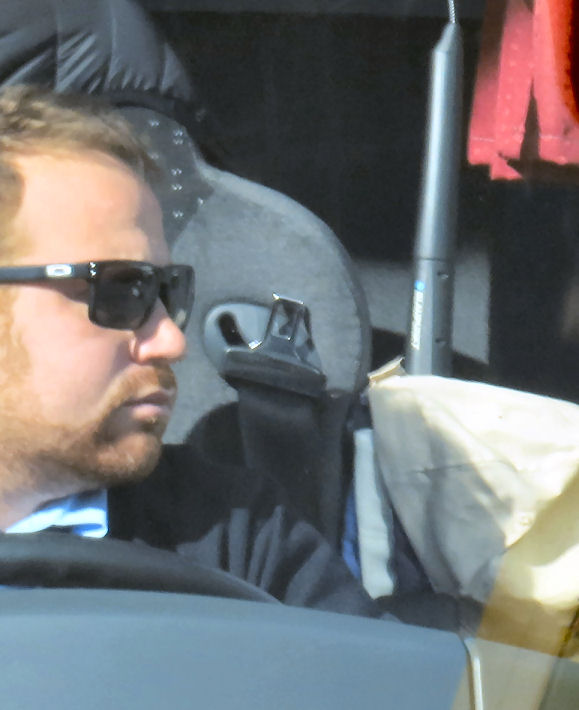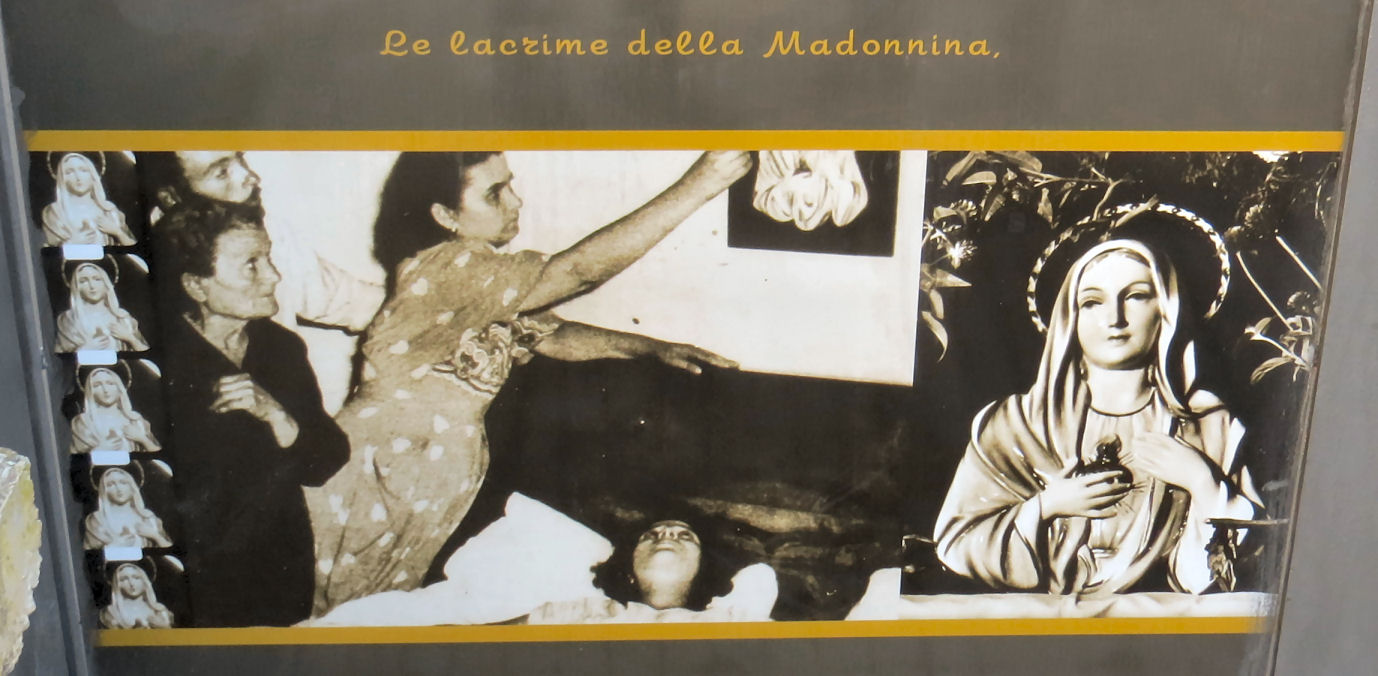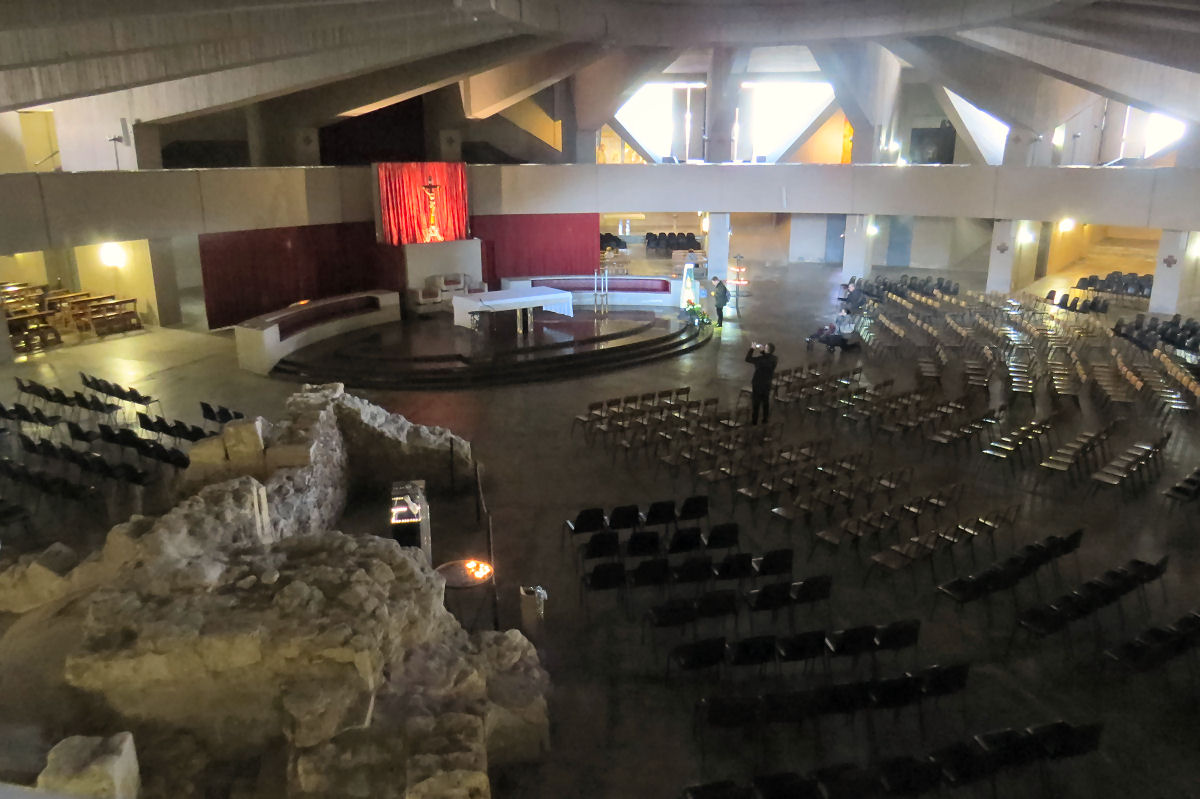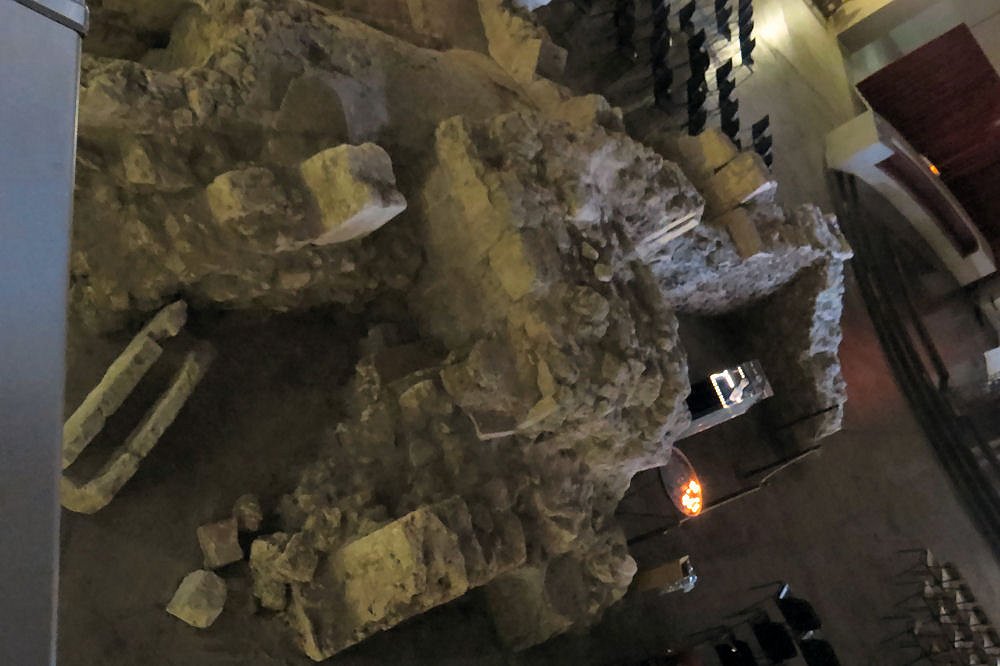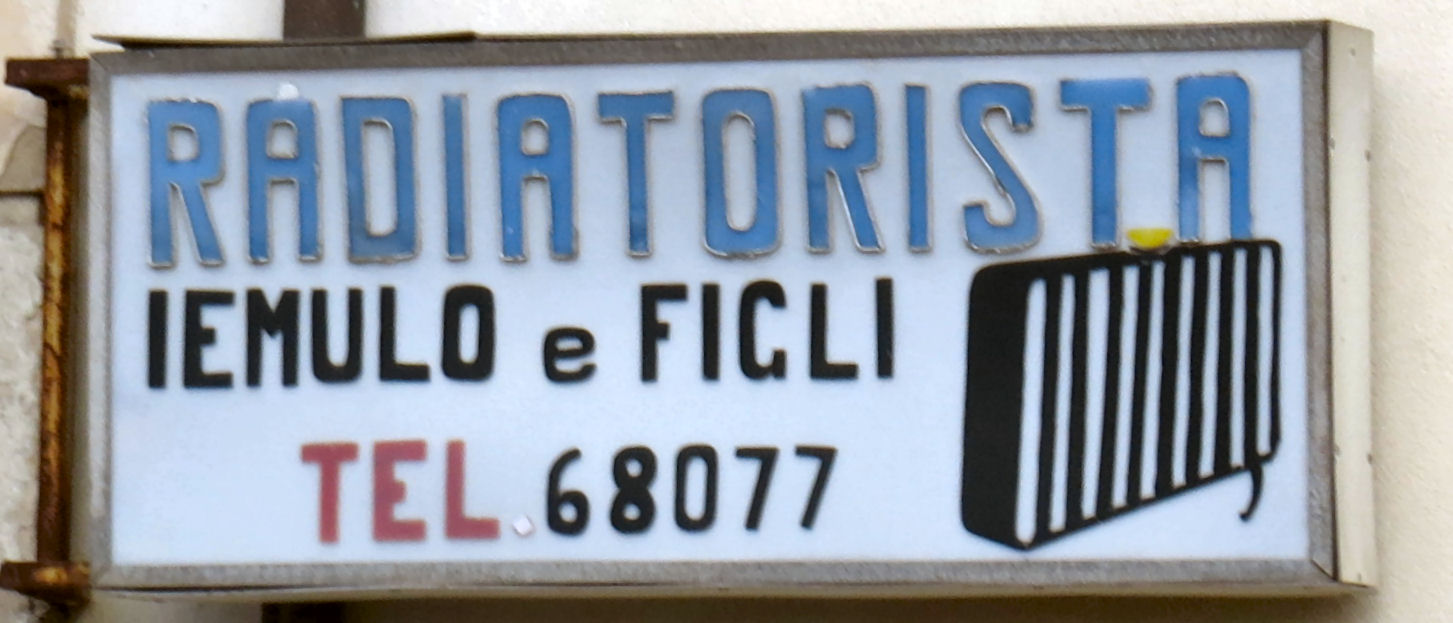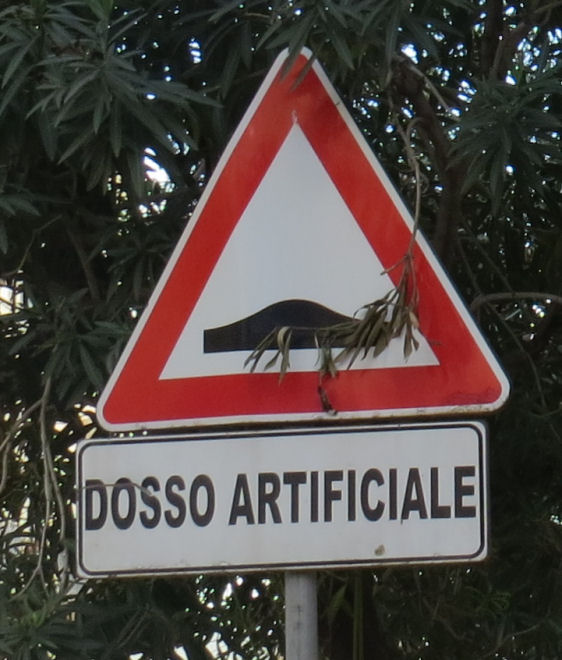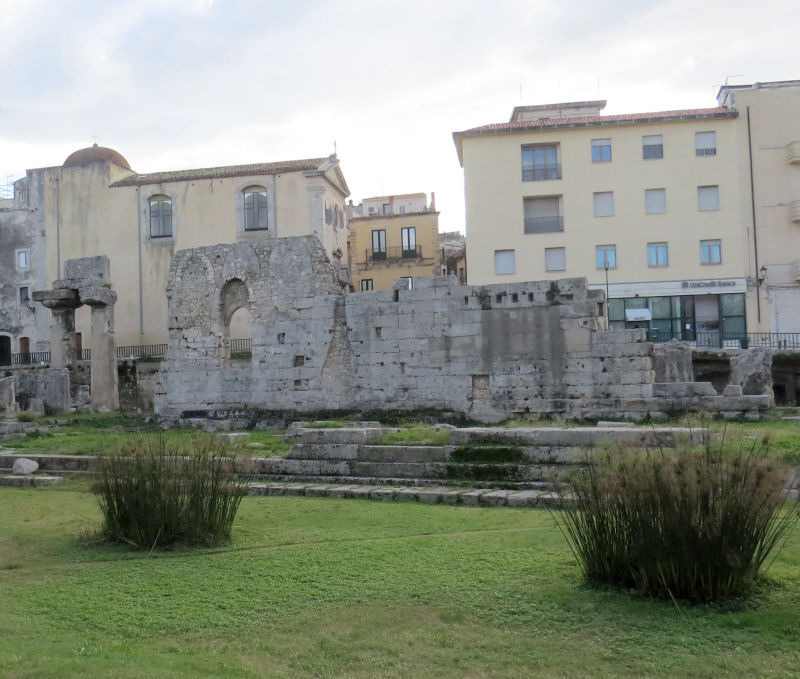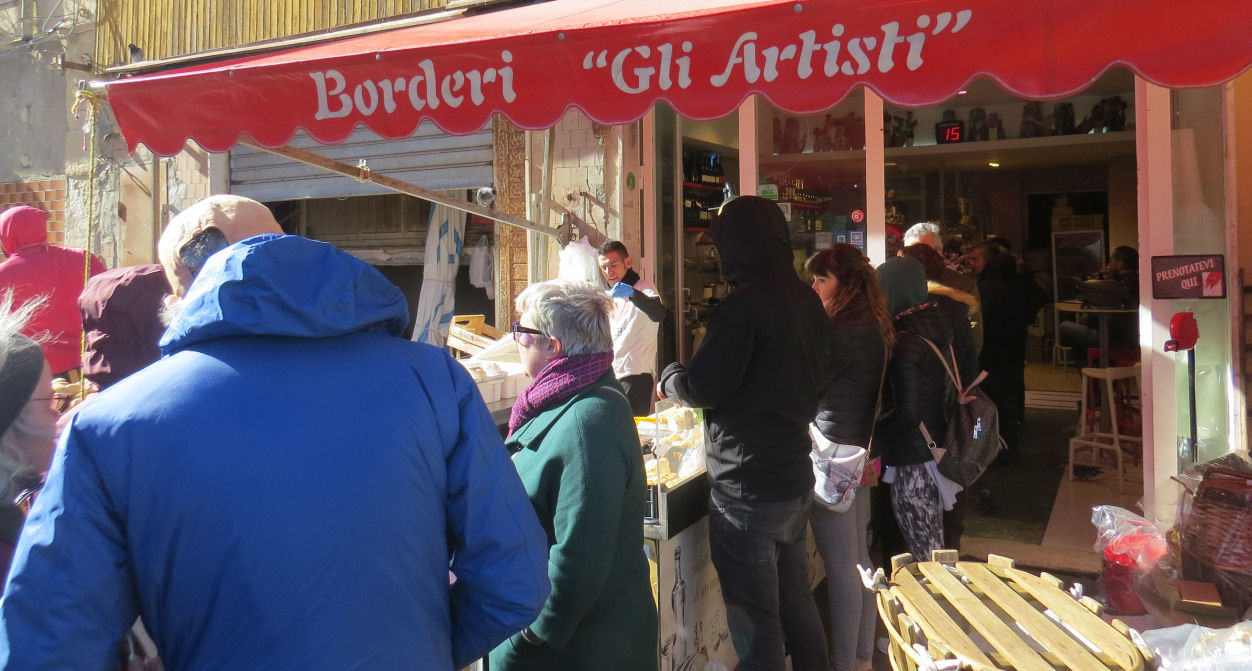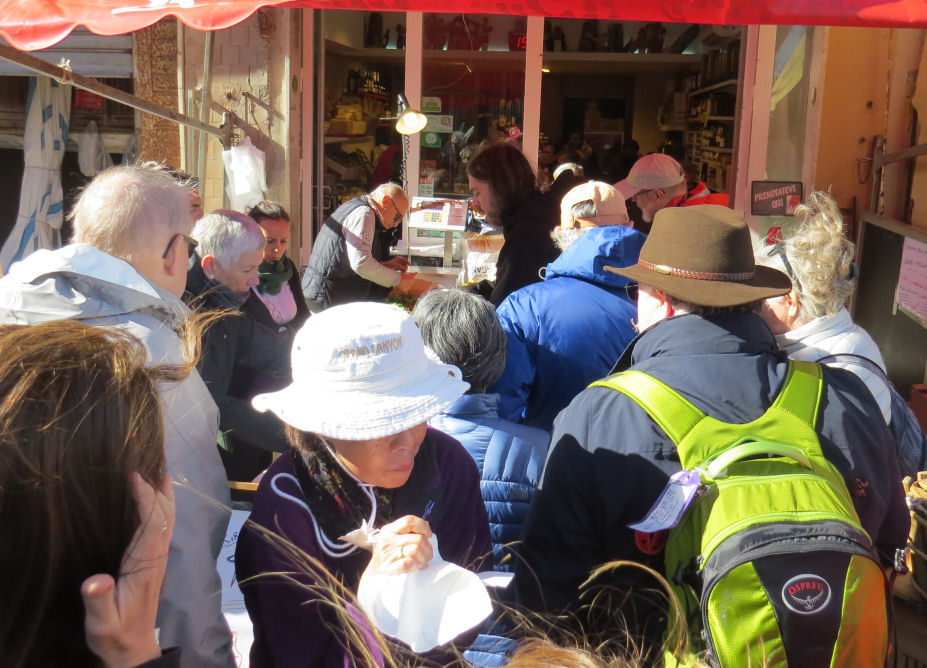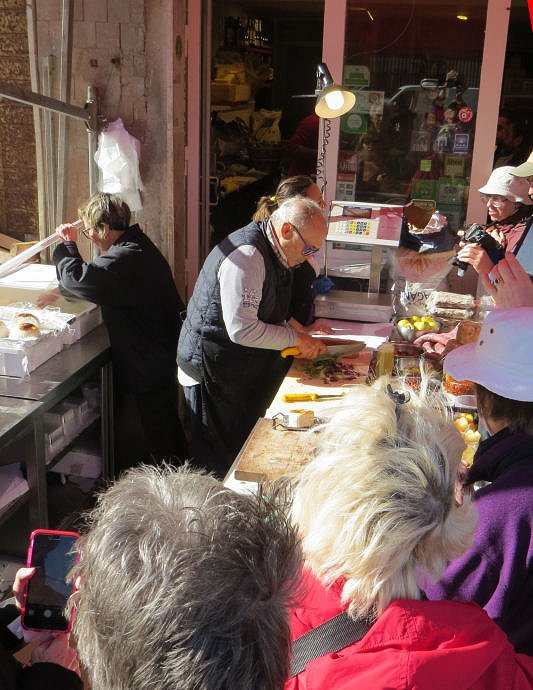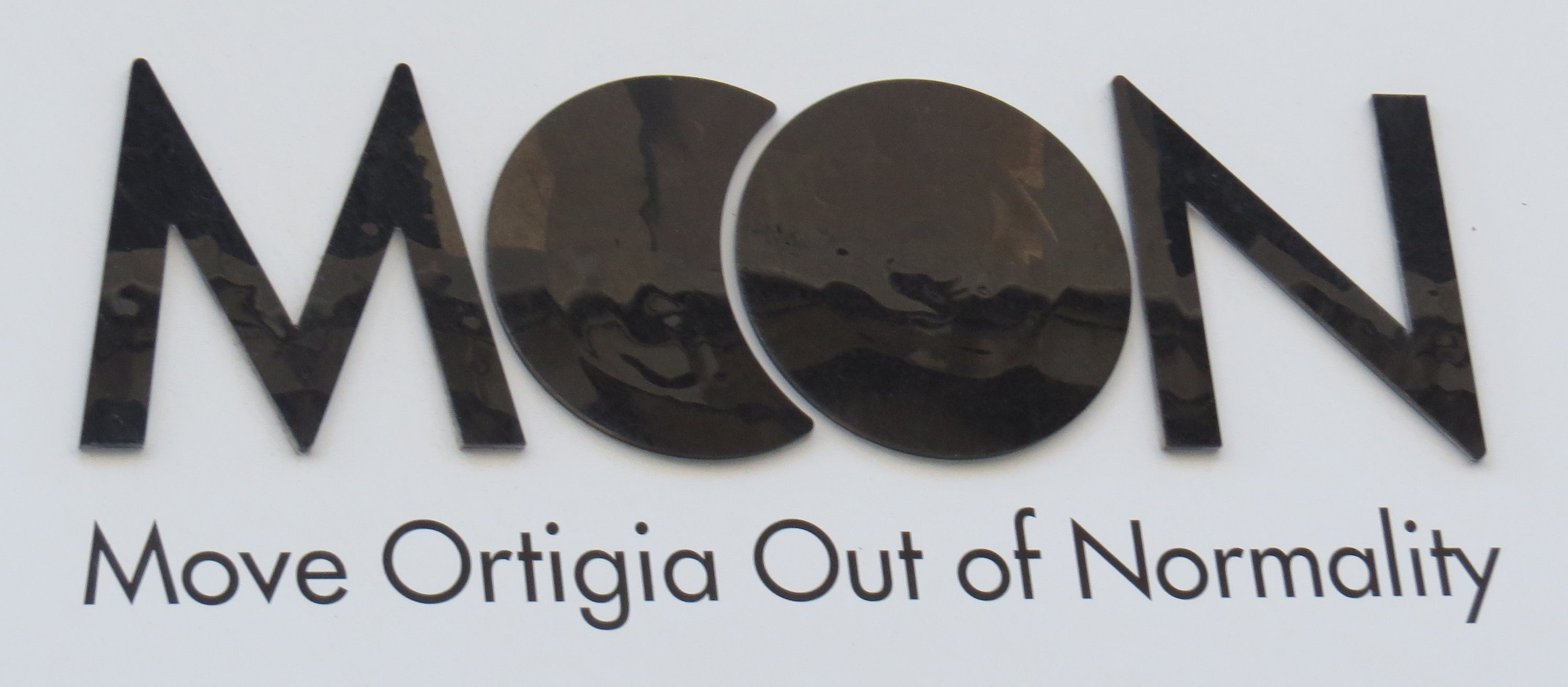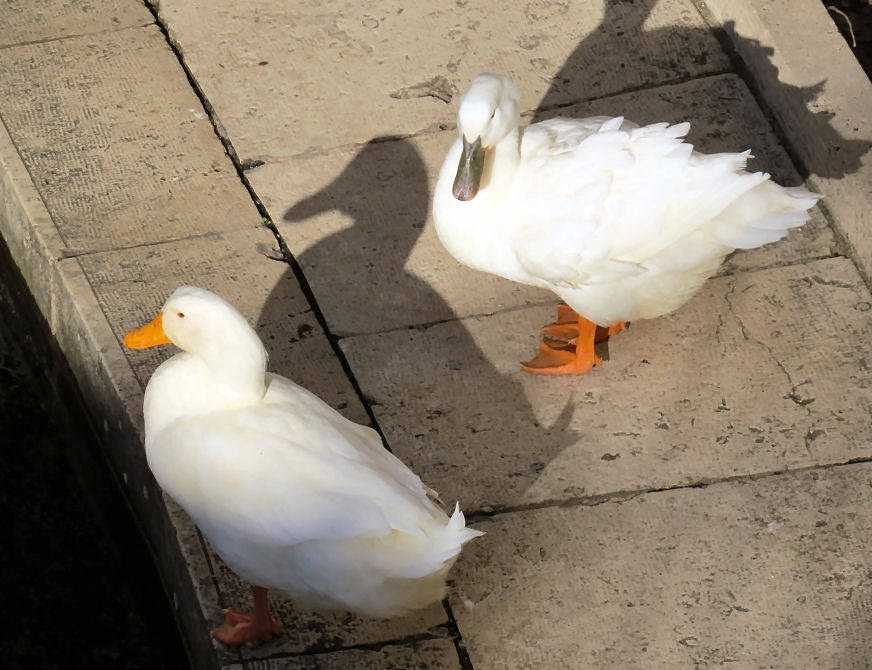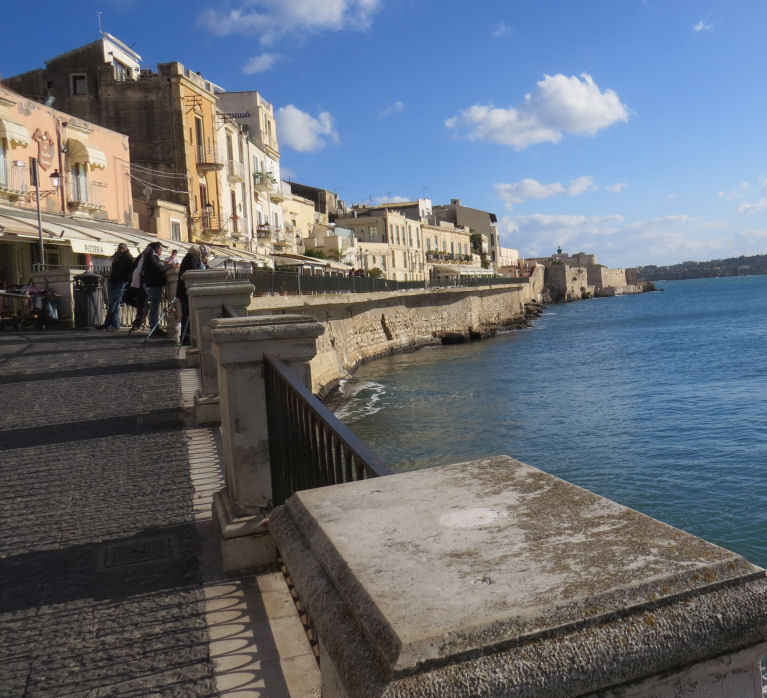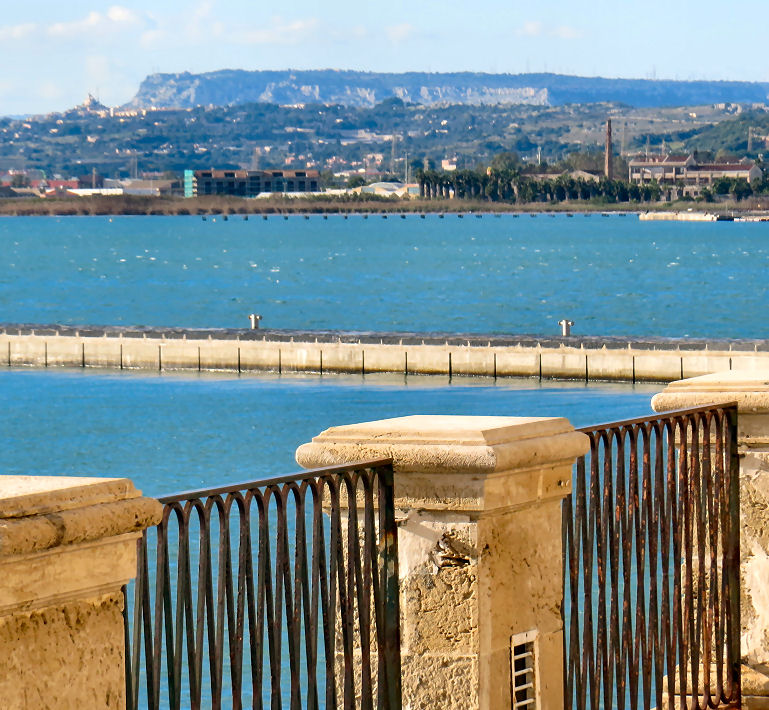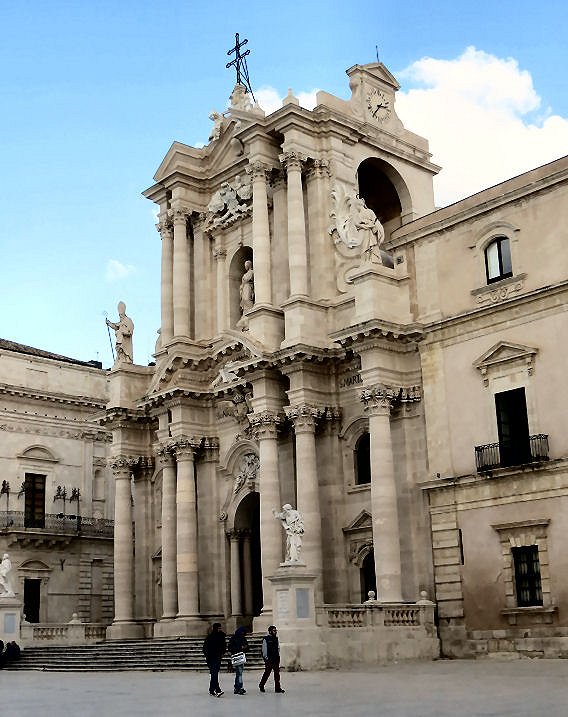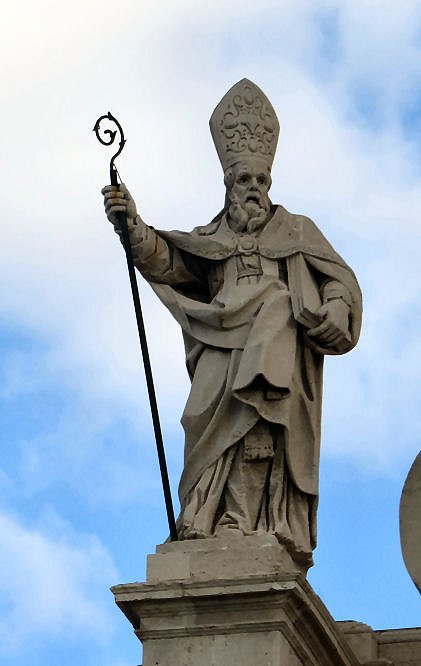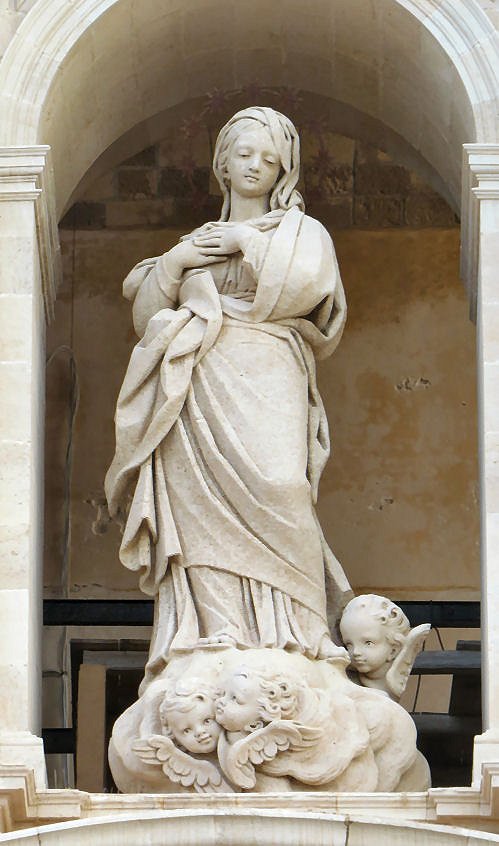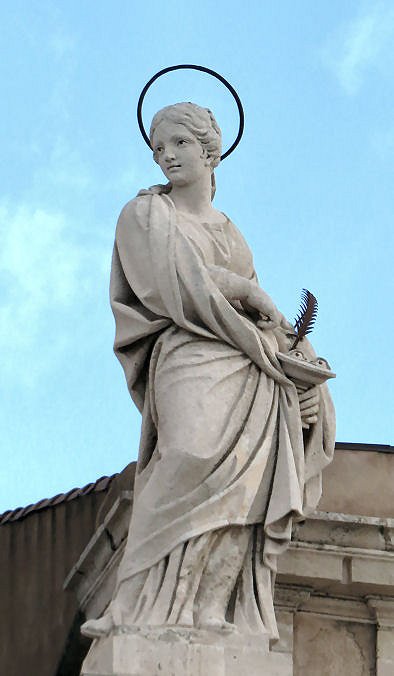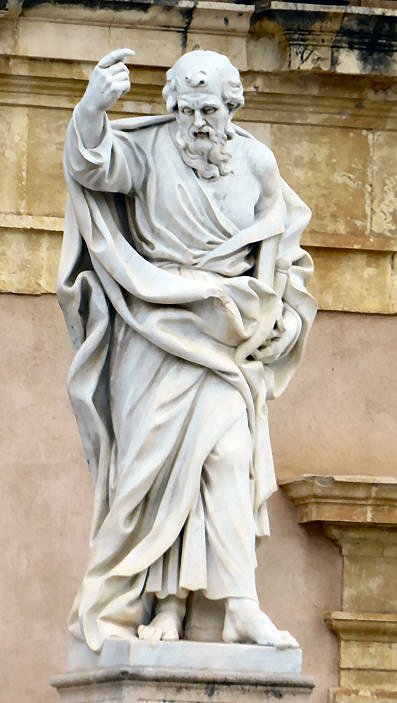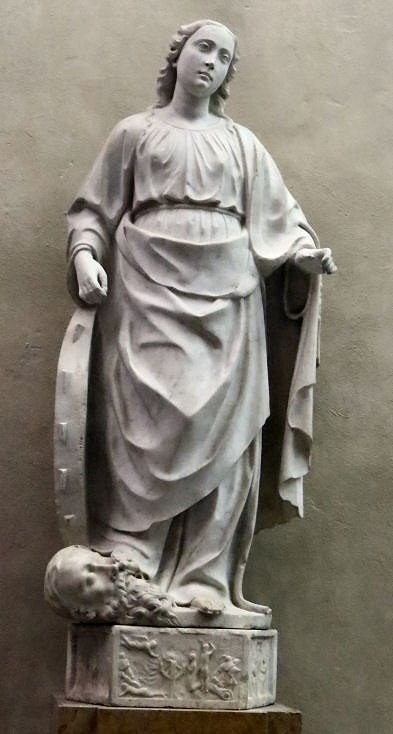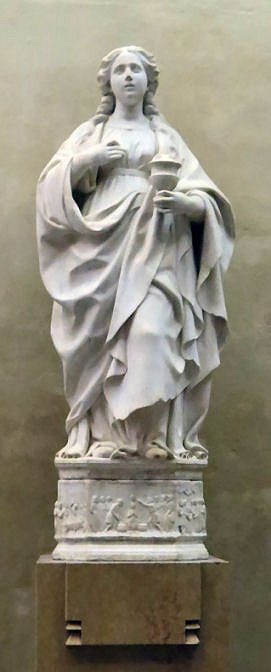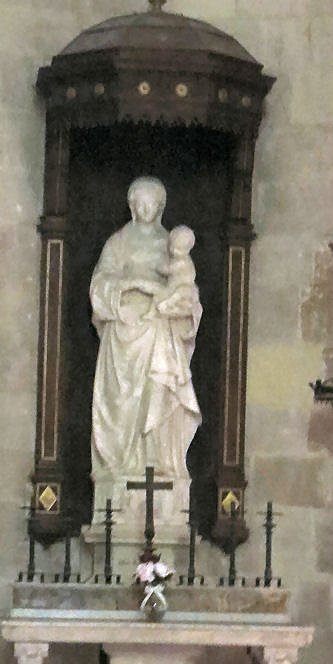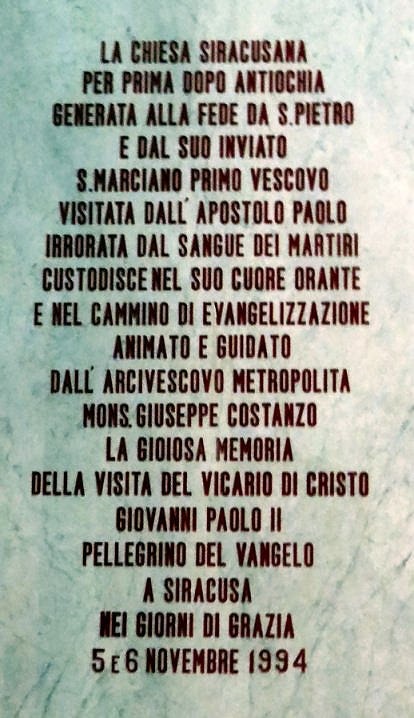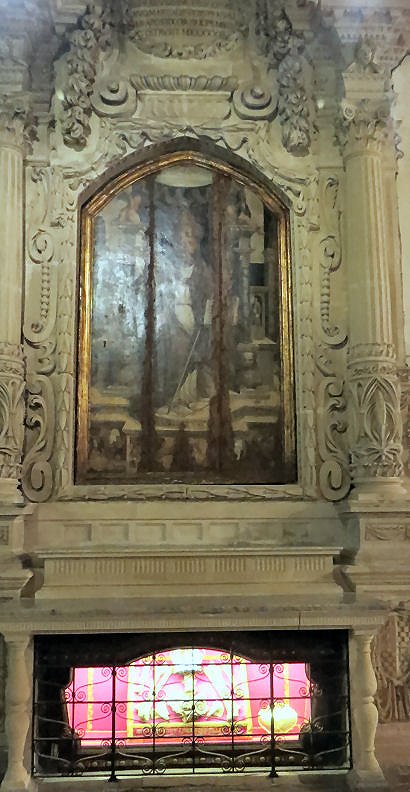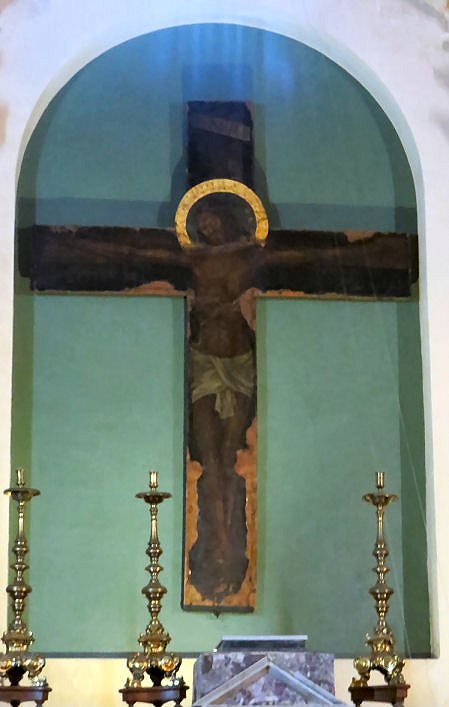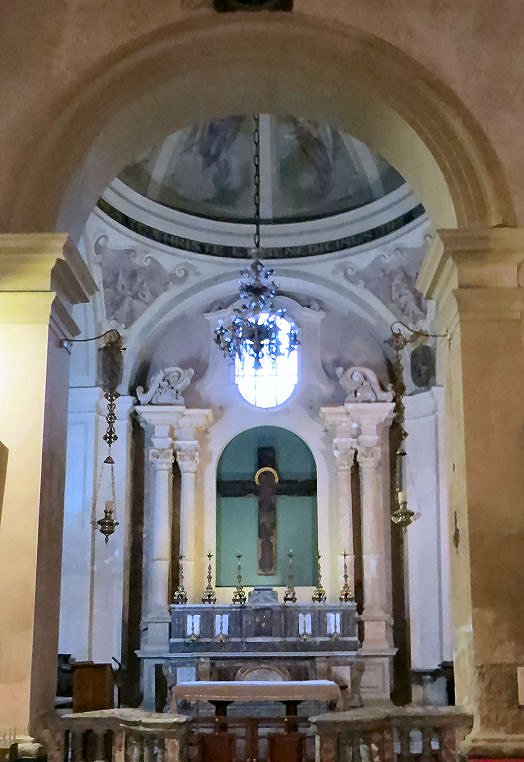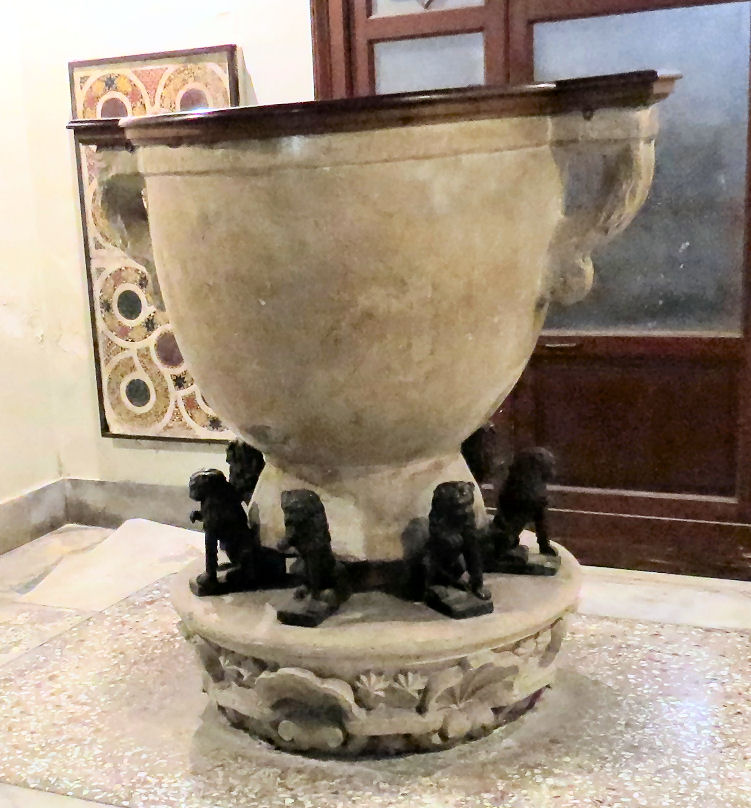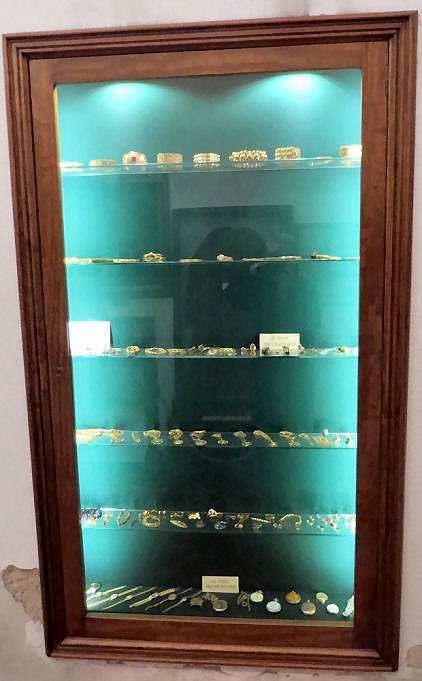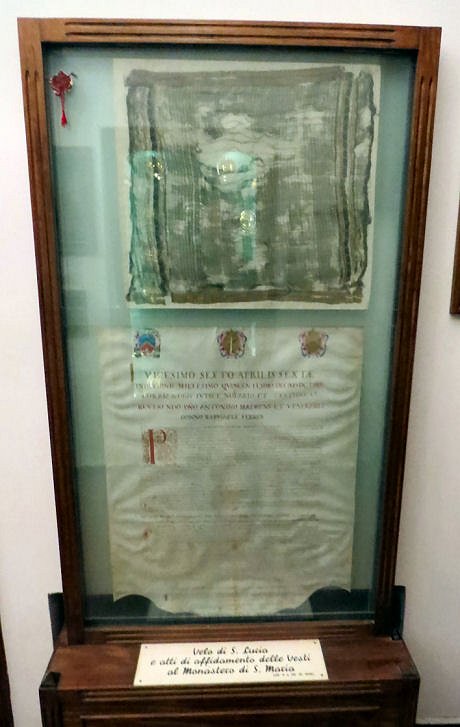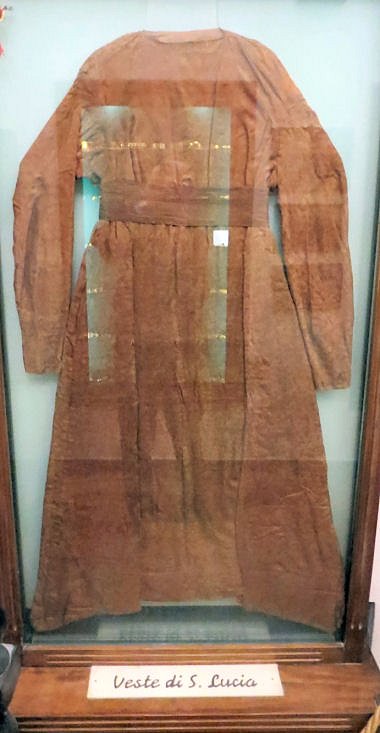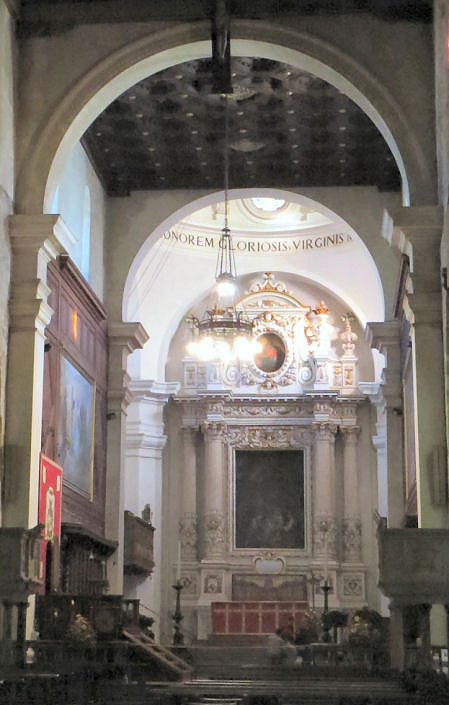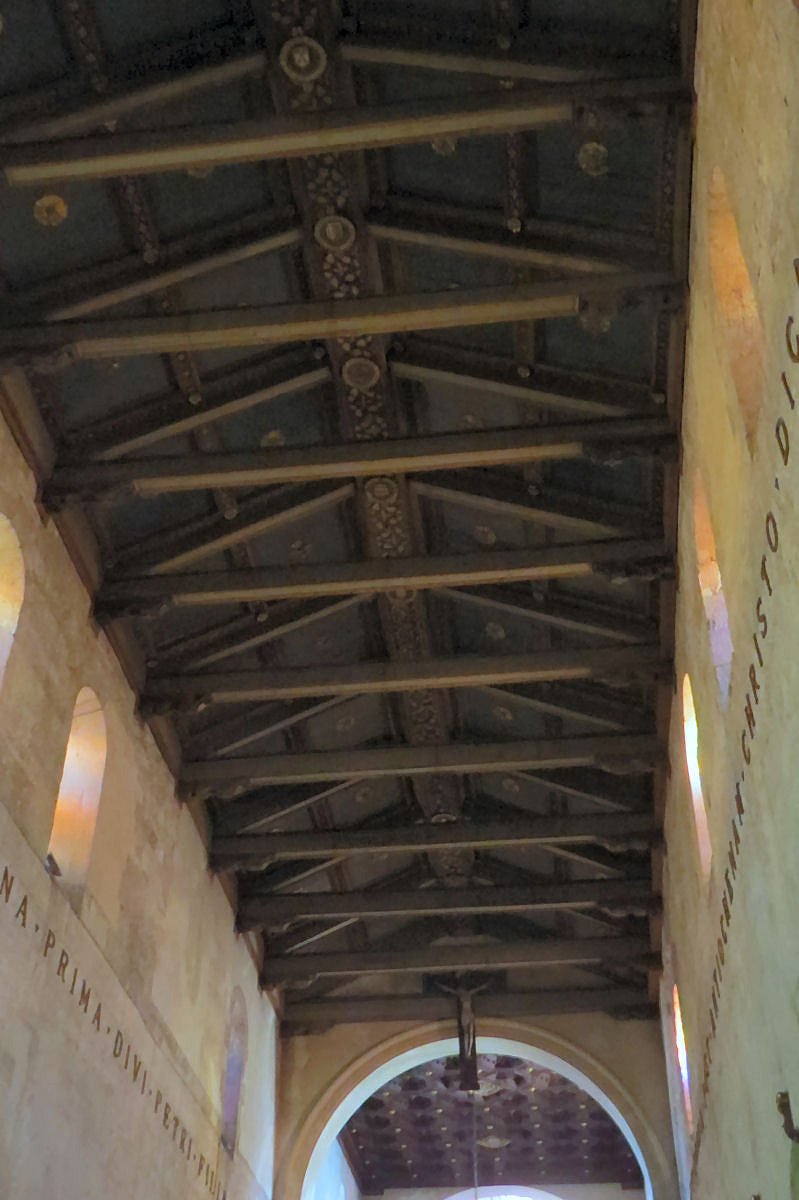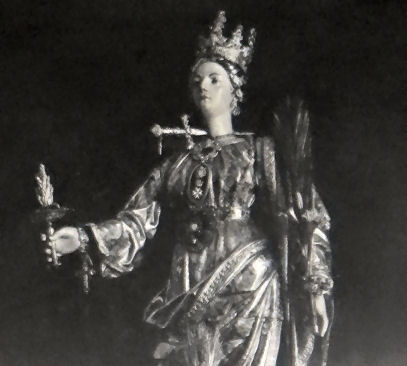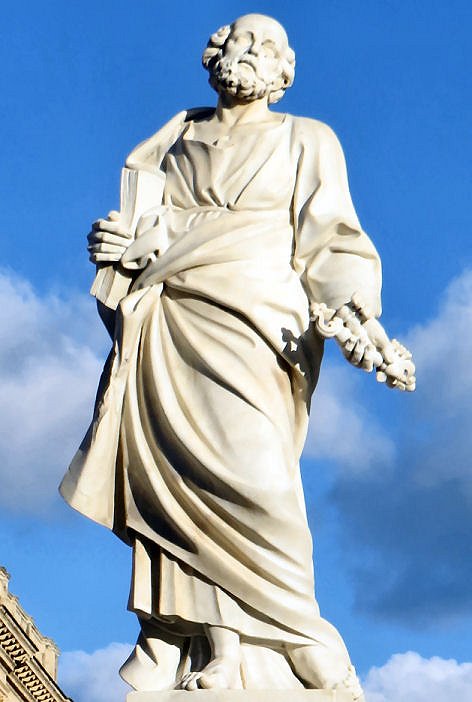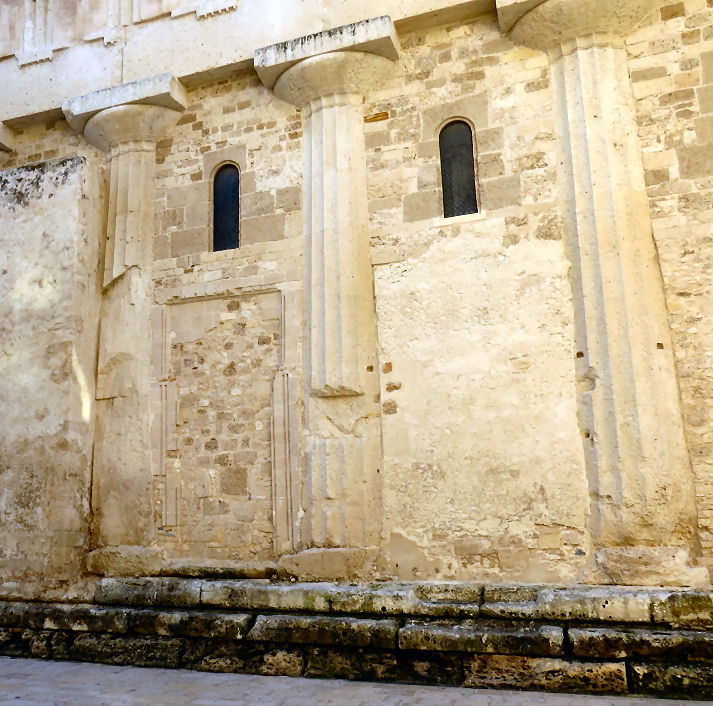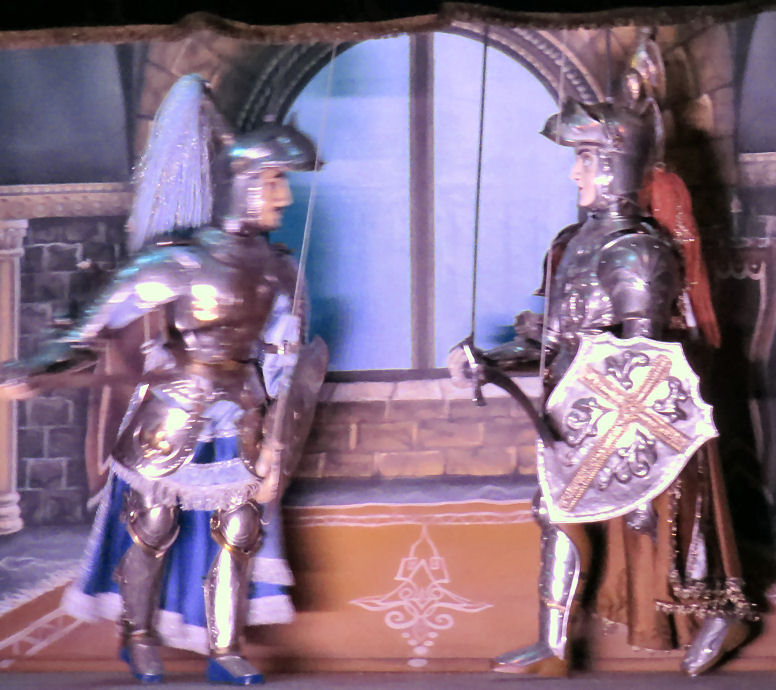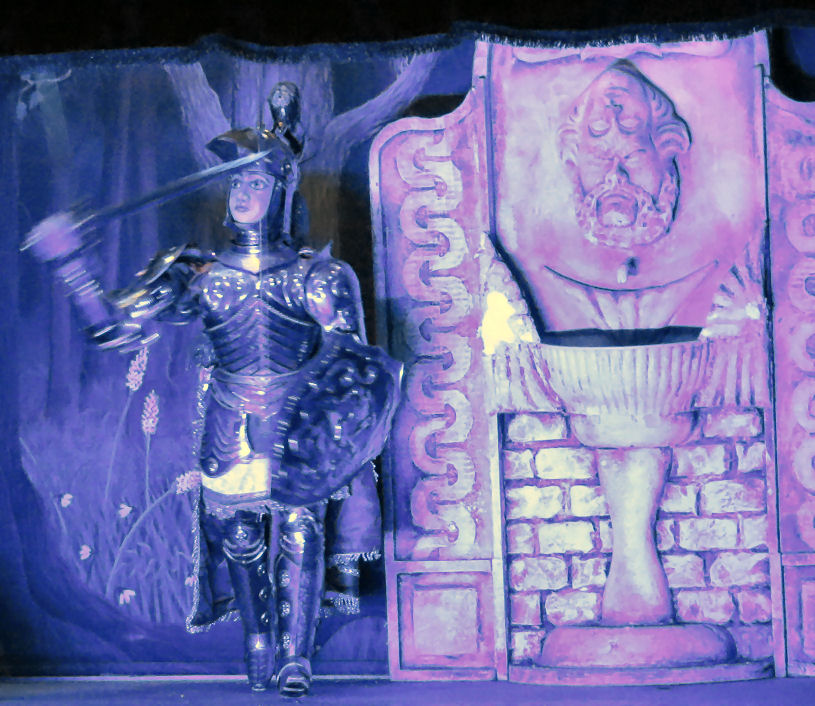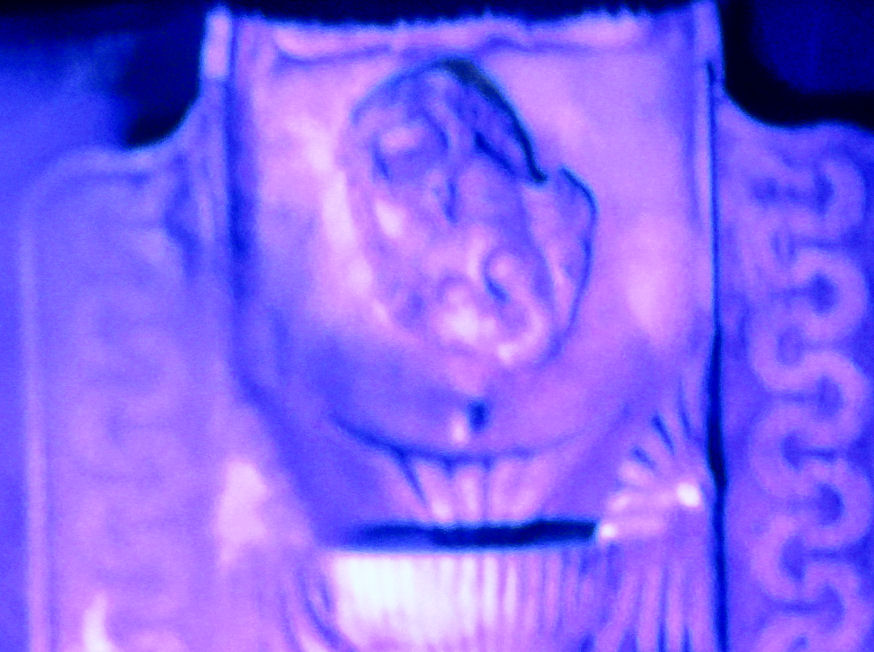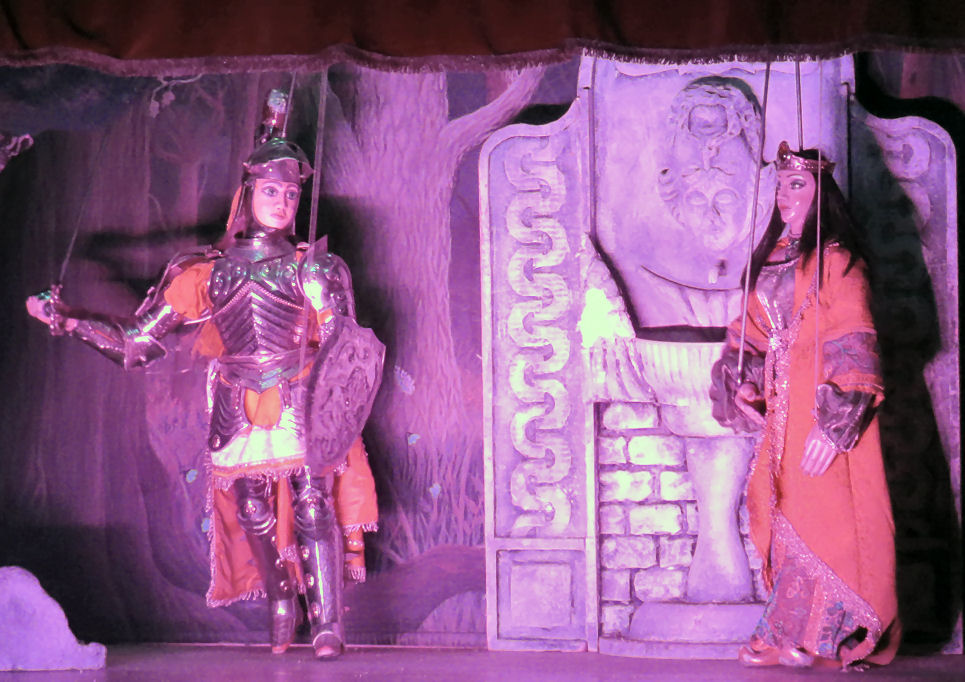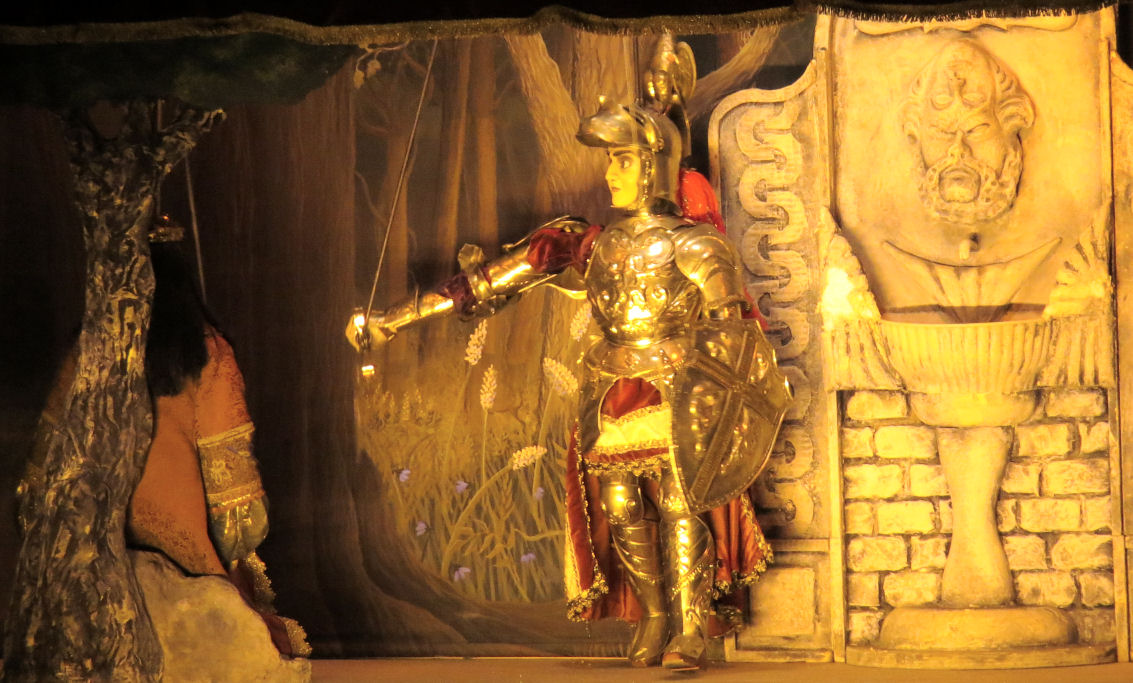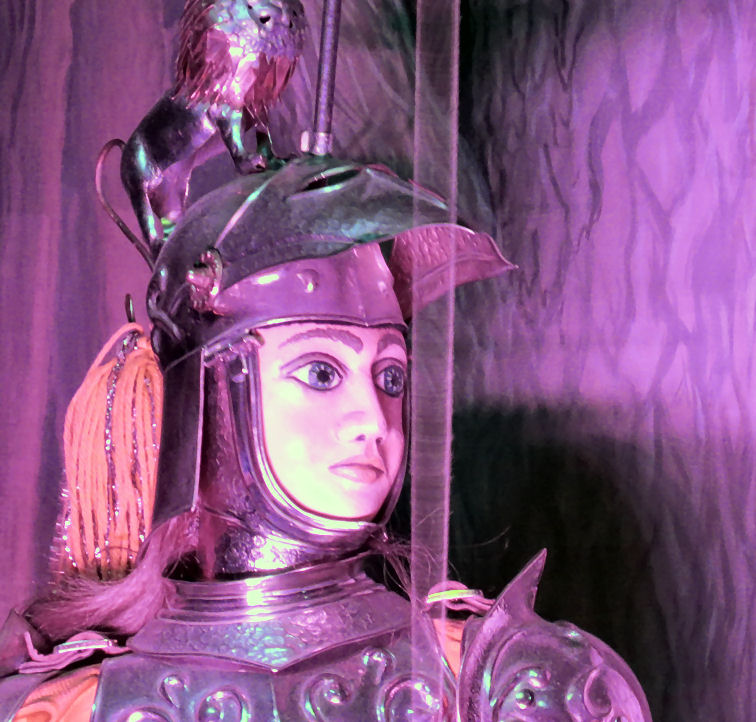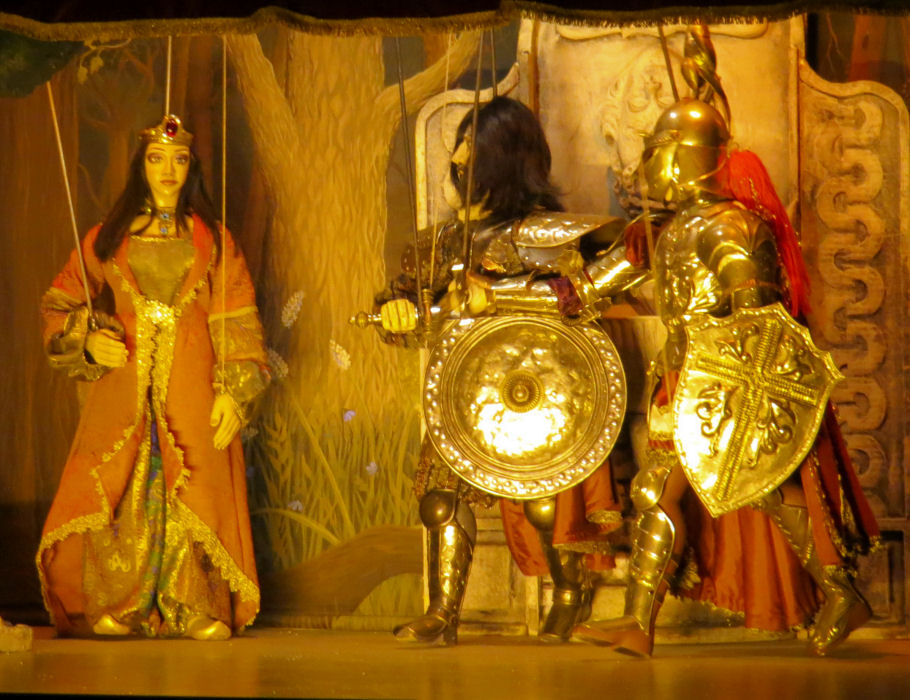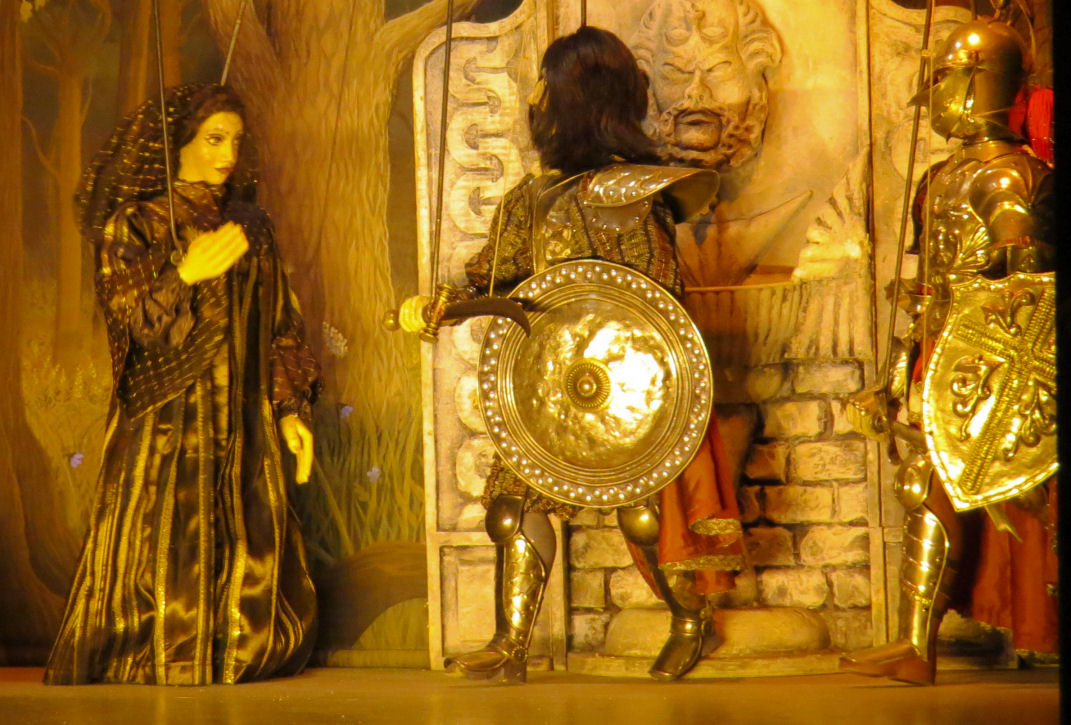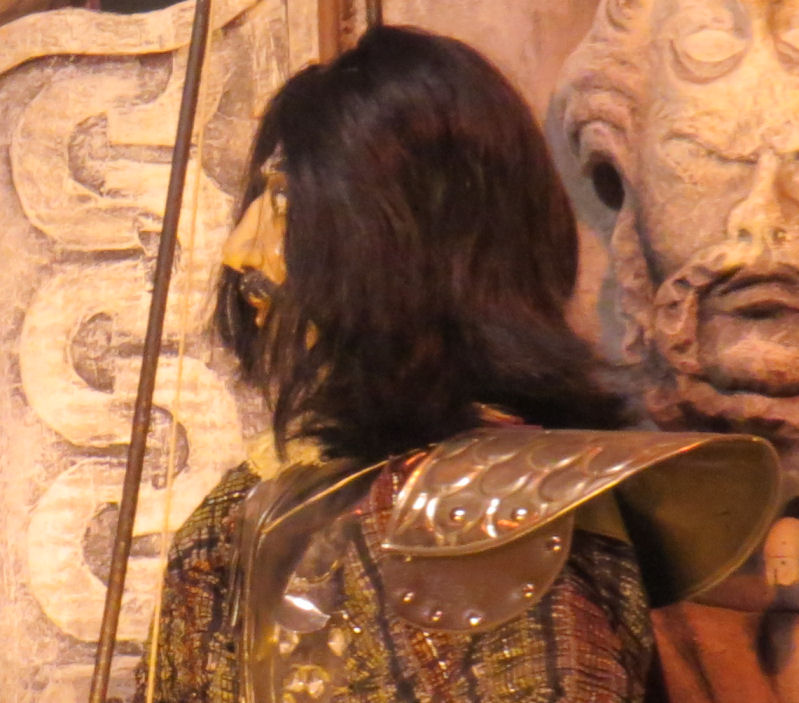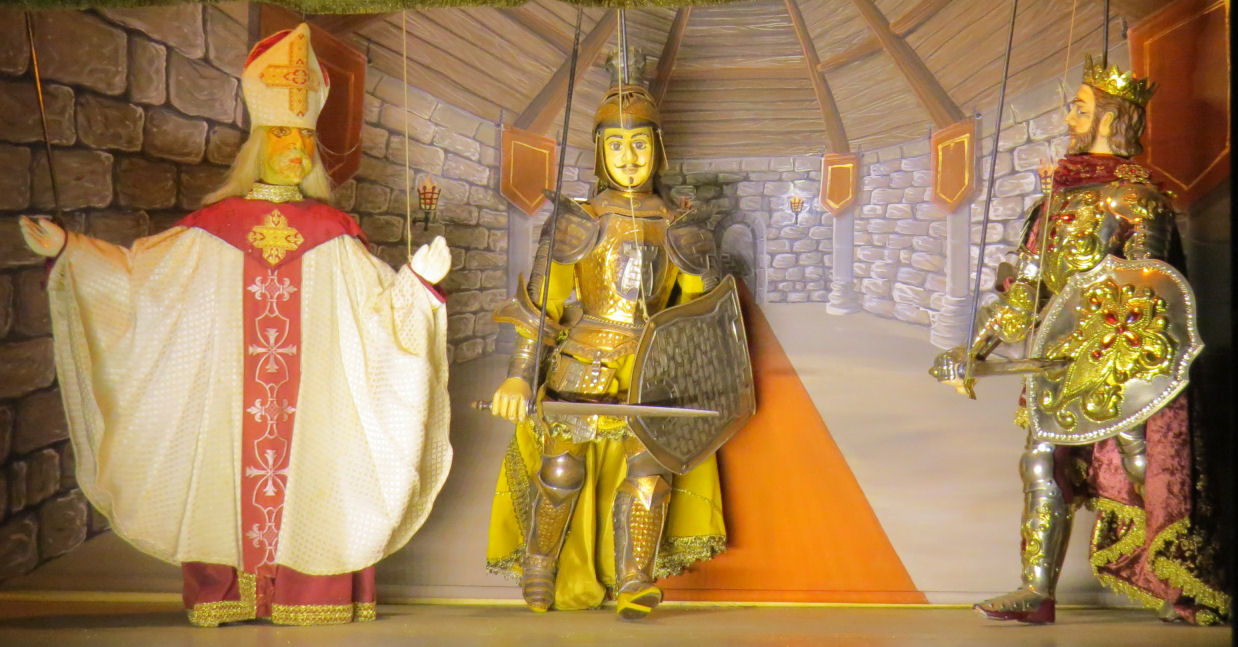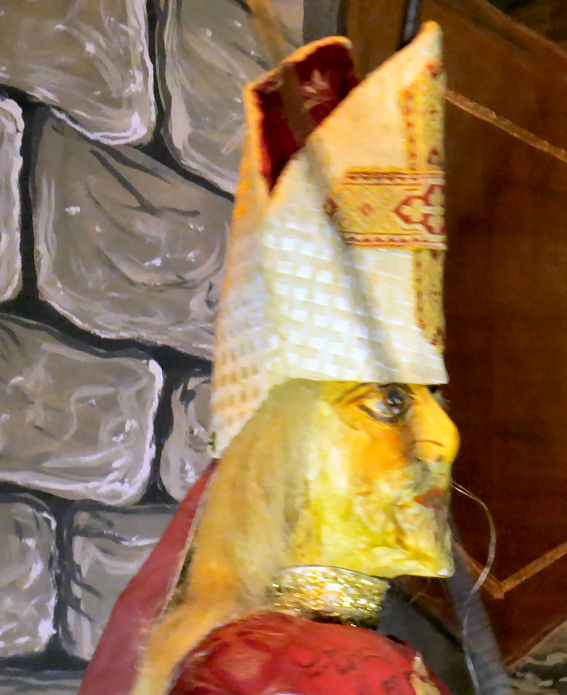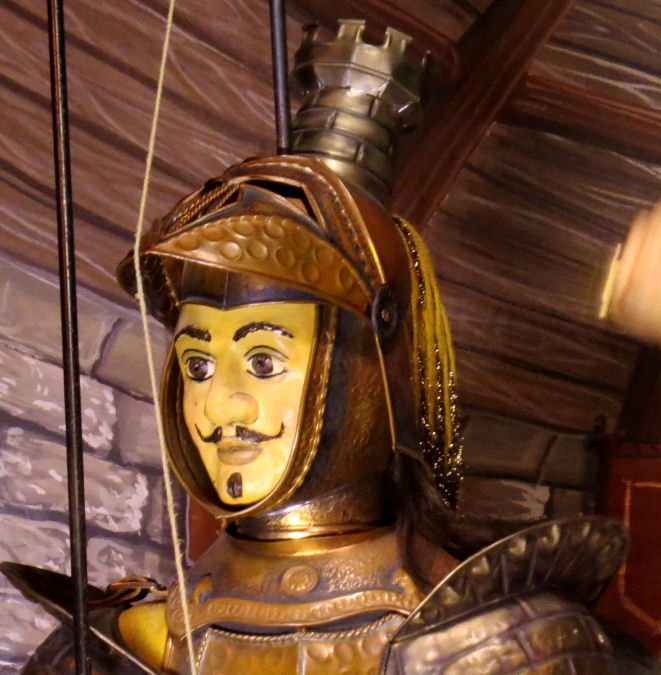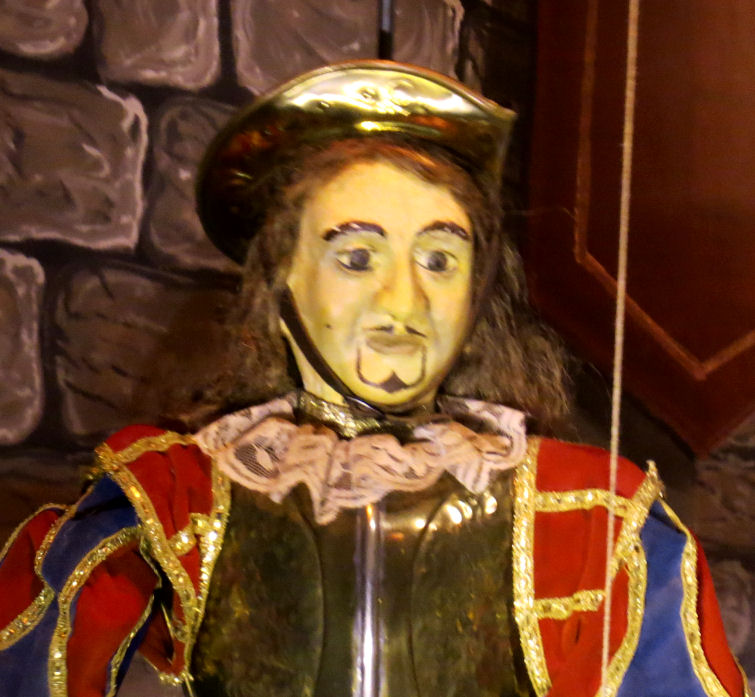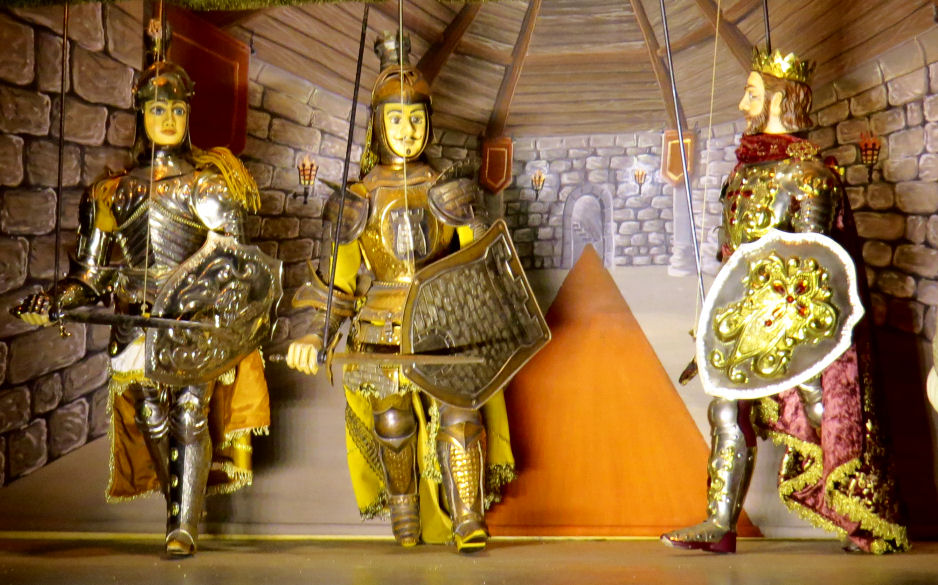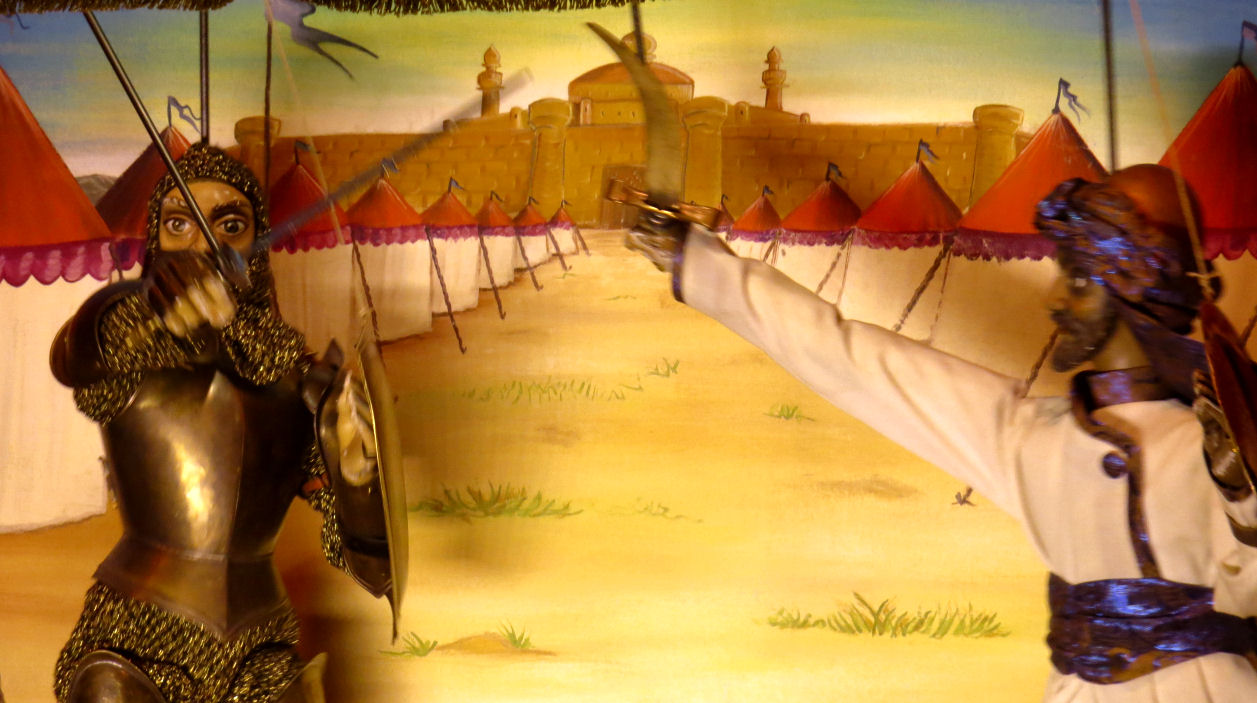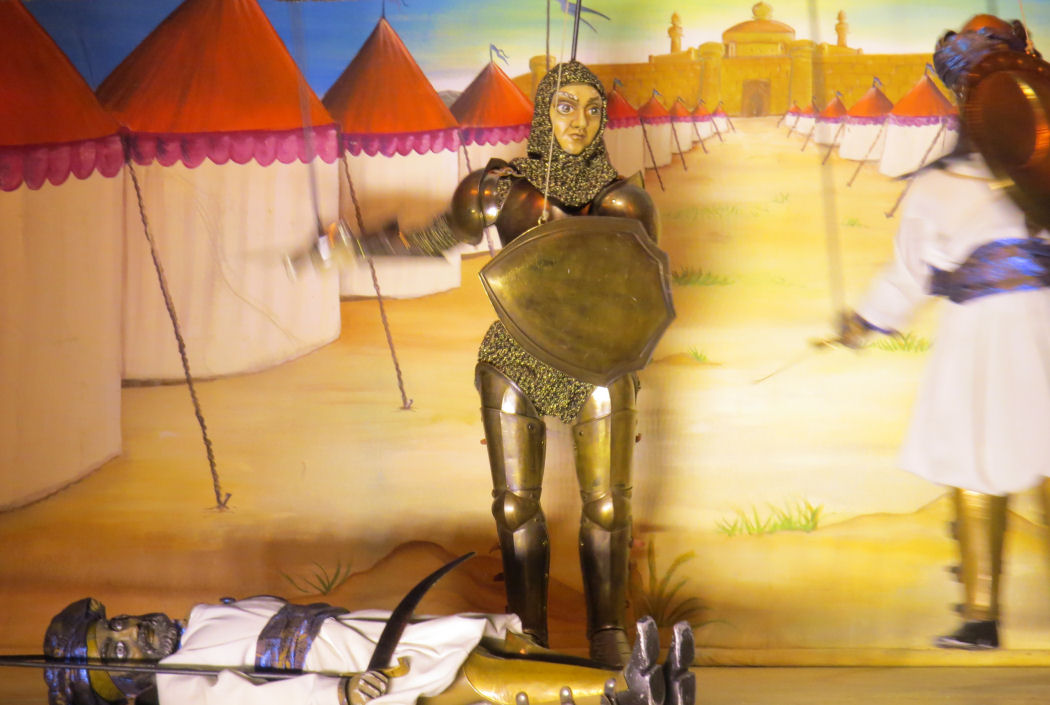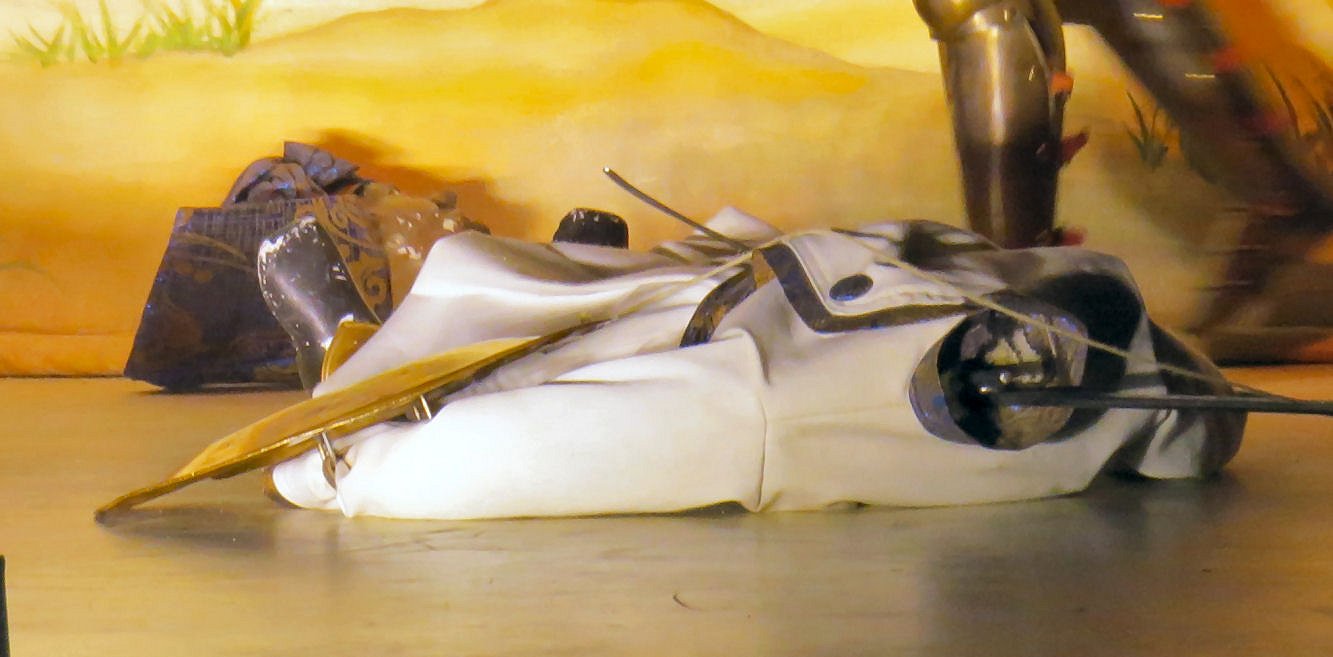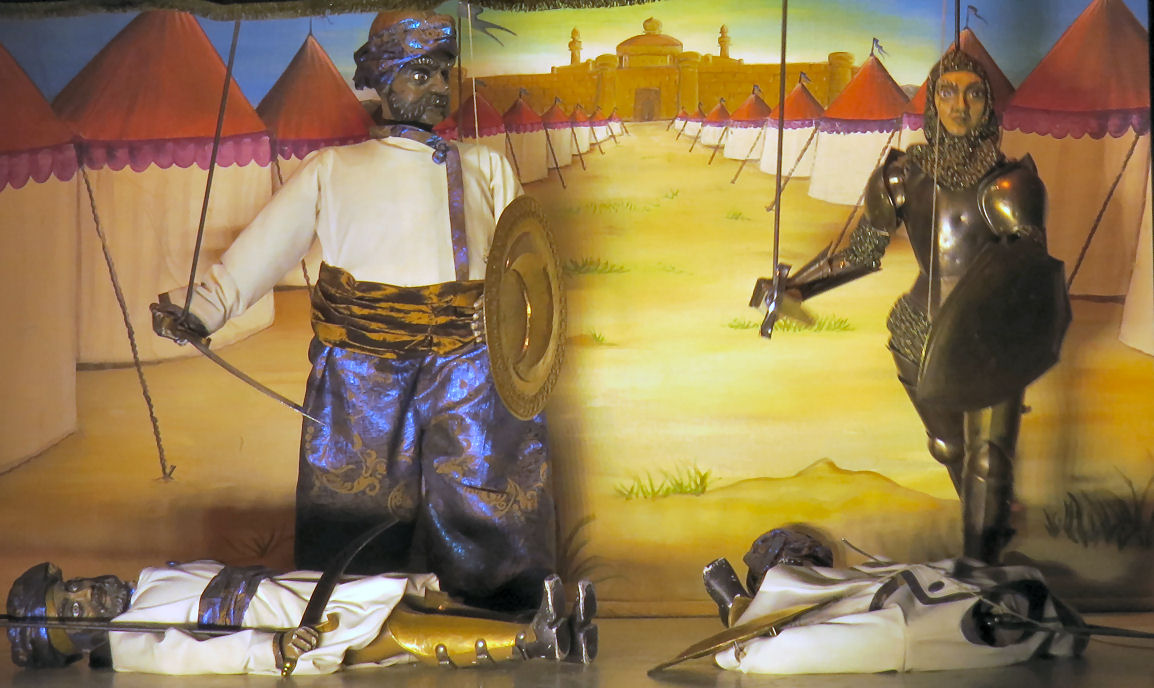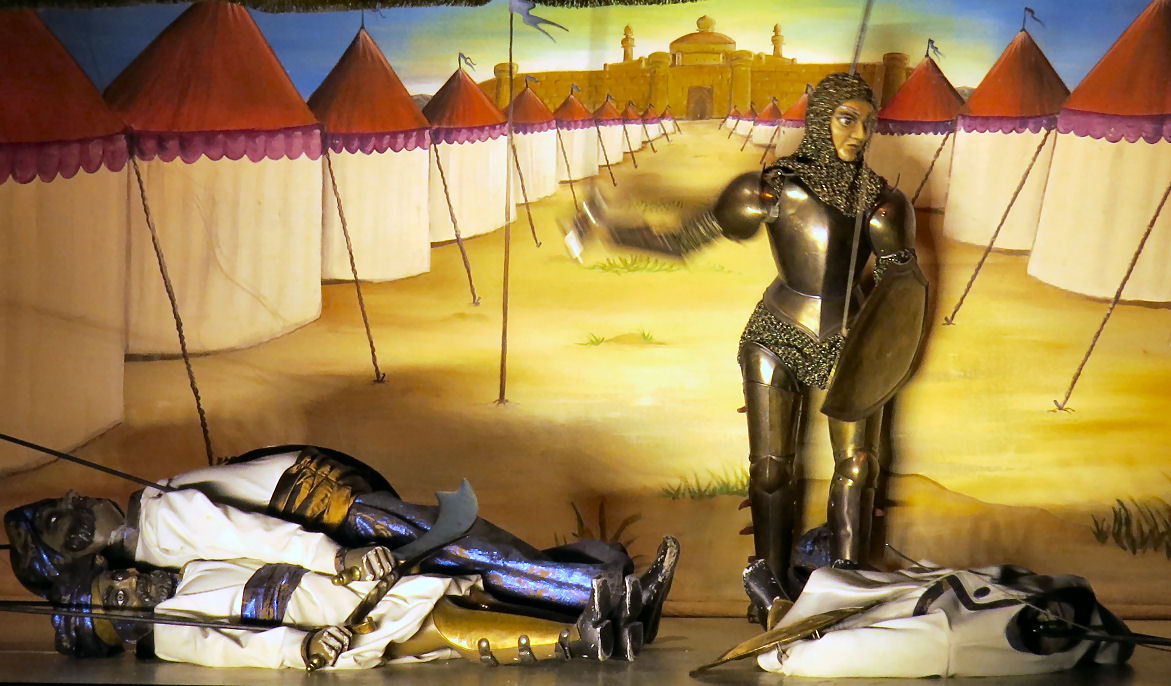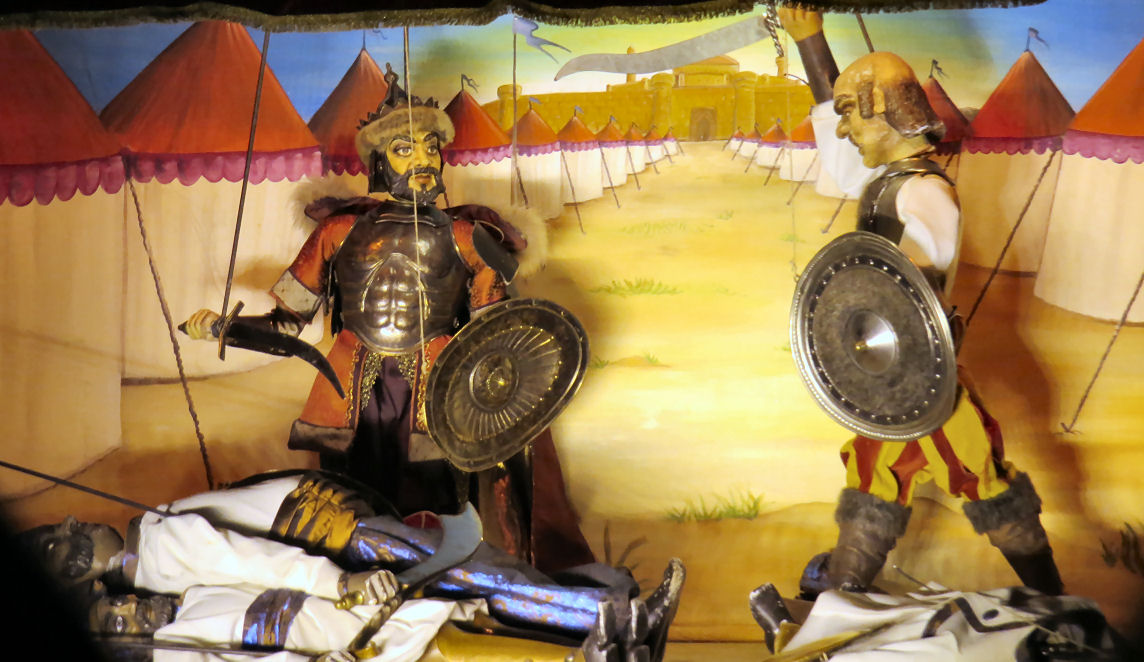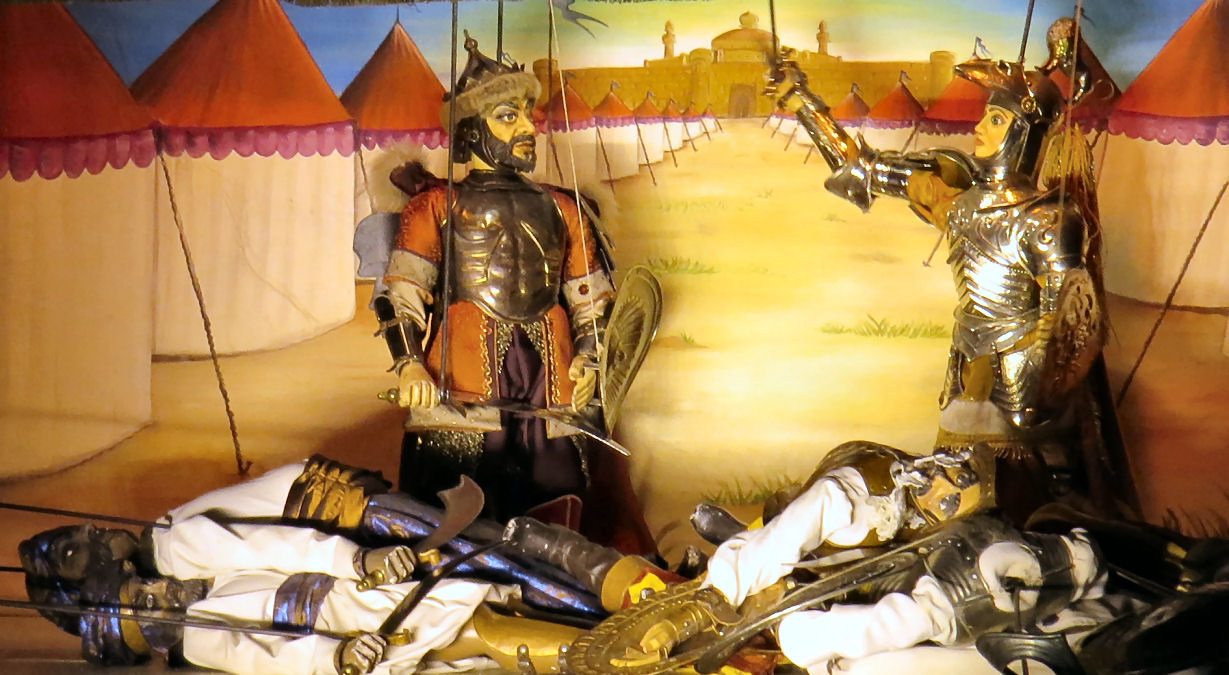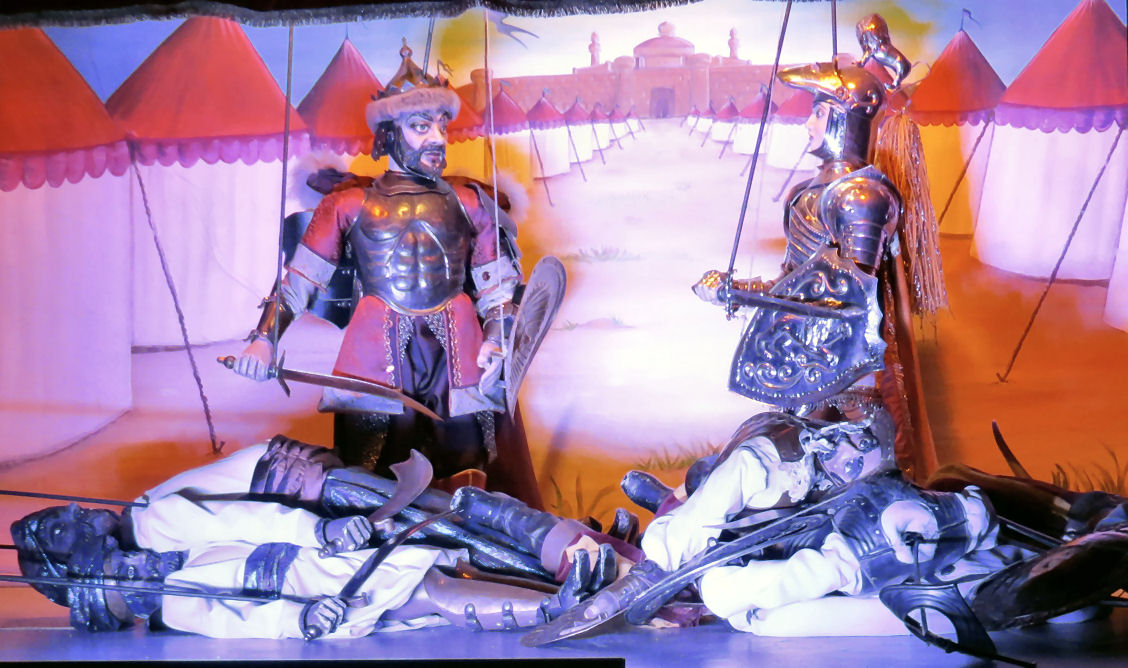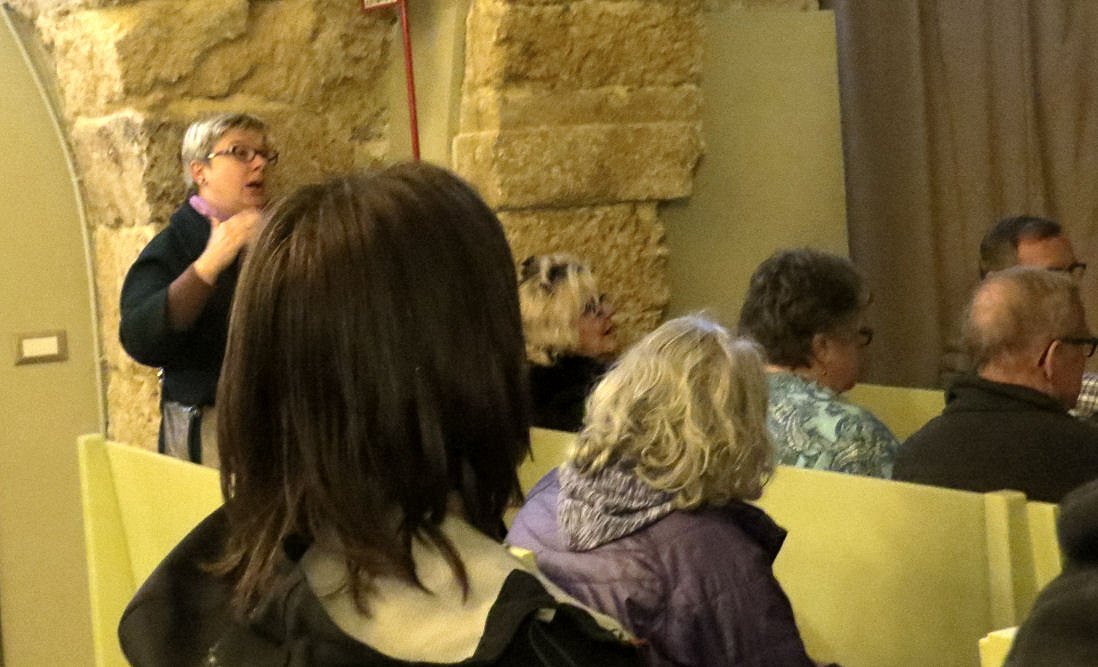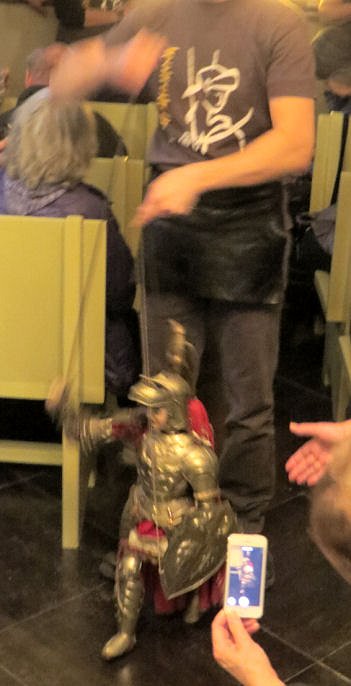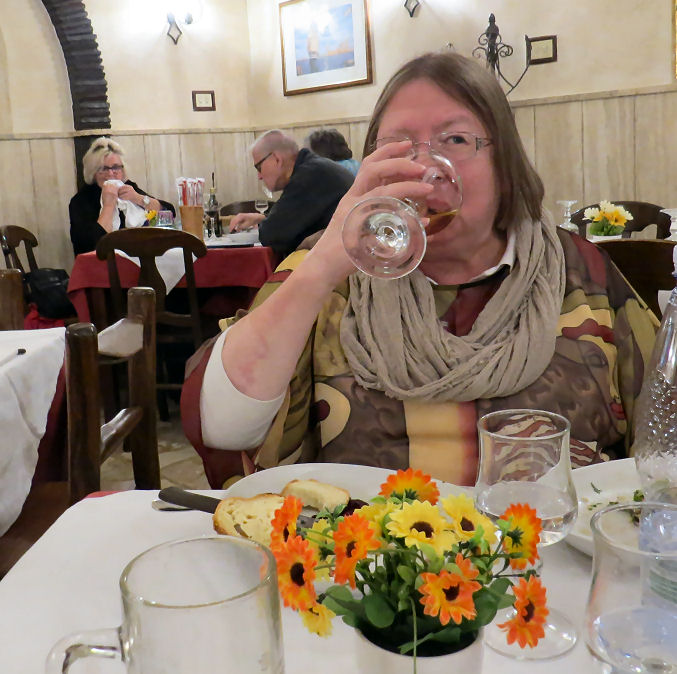I woke up at 6:30. I felt pretty good, but I was still coughing occasionally. I hoped that I would have an opportunity to buy some more cough drops at some point during the day, probably during our free time after the trip to the Archaeological Park.
Sue and I ate breakfast with Diane. I definitely had my appetite back. I consumed a banana, three peach slices, two bowls of cereal, a brioche, olives, a hard-boiled egg, and a cappuccino.
Quite a few people stopped by our table to ask how I was feeling. I told them that I felt fine; I only needed to reboot my digestive system after removing all traces of my luncheon at the Millennium Cafe.
I must confess that I experienced a considerable amount of schadenfreude when I learned that the people who had joined Susanna on the orientation walk the previous evening had been forced to deal with a significant rain storm. It had absolutely been uncanny how I had been able to avoid bad weather on vacations over a period of fourteen years.
After breakfast I had time to read a chapter or two of my book. I was a little annoyed that Norwich, while acknowledging Frederick II's amazing and diverse talents, downplayed his remarkable accomplishments just because his descendants had been unable to hold on to the empire that he had amassed.
Our group assembled near the shore perhaps fifty meters from the hotel. The wind was strong all day, and it definitely stirred up the sea that morning. I took some pretty startling photos.
Susanna had told us that there were two churches in Ortygia that were definitely worth visiting. The Cathedral, which she called the St. Mary Duomo dedicated to Minerva,[1] charged an entry fee of 2. She said that if we went there, we should bring our ticket stub to her, and she would reimburse us. The other church was the Church of St. Lucy, the patron saint of Siracusa. The latter was scheduled to close at 4 p.m.
The group walked up toward the northern edge of Ortygia. Along the way we passed Piazza Pancali, the site of the remains of a Temple to Apollo that dated back to the sixth century BC. We stopped for a few minutes, and I took photos from several angles.
We then trooped across one of the two short bridges that connected Ortygia to the mainland. Our destination was the spot in which Giuseppe's bus was parked. Along the way to our first attraction of the morning, the regional Archaeological Park that contained a Greek theater, a huge altar dedicated to Zeus, and a Roman amphitheater, we passed a McDonald's that featured a drive-through window. This concept was being marketed as McDrive. I suspected that the idea of consuming food in the car was a radical new idea to Italians, and I wondered how they would react to it.
We also came within a few blocks of the ultra-modern concrete church called the Madonna of Tears. I tried to take a photo of it through the window of the bus, but I was unable to get my camera ready in time. This was at most a small tragedy. I soon learned that we would be visiting it after our sojourn to the archaeological area.
When we arrived at the starkly empty parking lot of the archaeological area, Susanna introduced us to our guide, the ebullient Eva Greco. Eva told Susanna and the rest of us that she had been excited on the previous evening to watch a twenty-five minute television show about Siracusa. Susanna said that she wished that she had known about it.
The weather was the coldest that we had experienced on the tour, and it was quite windy. Fortunately, the sun was out. In the shade it was rather chilly, but in the sunny areas it was comfortable. The sun and the lack of other tourists made it a great day for photography.
Eva's presentation began at the Altar of Zeus, which was constructed in the third century BC by the Tyrant of Siracusa known as Hiero[2] II. It was approximately two football fields long! 4500 oxen were once simultaneously killed at one time in sacrifice to Zeus.
The first Greek settlement in this area was in Ortygia in 734 or 733 BC. In 212 BC Siracusa was conquered by the Romans. A long battle in which Archimedes was killed was followed by an eight-month siege. The Romans finally entered the city when someone allegedly let them in at a gate near the Fountain of Arethusa.
The Greek theater was built two centuries before the altar to Zeus. There was a quarry across the street that made it feasible, if incredibly difficult, to transport the huge boulders to the altar site.
On September 25, 2016, there had been a hurricane and a flood. Siracusa received 1.5 meters of rain. Two trees near the altar fell down. Siracusa has the largest aquifer in Sicily.
We walked the short distance up to the theater. Its purpose when it was constructed in 481 BC was primarily religious. Eva told us that the tragedies in Greek literature began with a competition that was part of the worship of Dionysius, the god of the grape harvest. The prize for the competition was a goat that was sometimes sacrificed. The plays were named after the lamentations that were sung when the goat was slaughtered. The word tragedy in Greek actually means Goat Song. Eva also asserted that the concept of a scapegoat was also related to this.
All roles in the plays were played by three male actors who donned different masks to represent different characters or different moods for the same character.
Only the Greek citizens attended the theater performances. The theater had a capacity of about sixteen thousand. Pots were used to amplify the sounds. Aeschylus himself visited Siracusa at least once and staged at least two productions here.
During the Spanish rule of Sicily, which began in the fifteenth century, the theater and the other ruins were used as a quarry.
Live productions were still staged in the theater every year. Eva said that Antigone and Prometheus Bound have both been done there. In 2017 they planned to produce Oedipus and Seven Against Thebes.[3] Evidently the theater was used for other purposes as well. Some people were down in the stage area, which was roped off from the tourist area. They appeared to be making preparations form some kind of show.
On the hill above the theater were caves that once contained tombs.
The Greek chorus stood in the Orchestra, which was in front of the skene, the Greek term for the stage on which the actor's performed. Behind the stage was the backstage area. The seats had cushions.
Eva showed us an inscription that clearly idendified the wife of Hiero II, whose name was Philistis.
On our way to the cave known as the Ear of Dionysius, Eva pointed to some caper plants that were growing from limestone. She also pointed out some oleander plants and warned us that they were poisonous. I had to wonder if perhaps the Millennium Cafe had used a little to flavor its frutti di mare.
We also got a look at the huge quarry known as Latomia di Paradiso. Eva told us that twelve pillars once supported the cover of the quarry.
The Ear of Dionysius, which is twenty-five meters high, was named by Caravaggio when he fled to Sicily to avoid legal problems on the Italian peninsula. He named it after Dionysius I, Tyrant of Siracusa from 407-367 BC. According to legend, prisoners of war were held in the cave. Dionysius hid outside and listened to them. Because of the cave's excellent acoustics, he could supposedly understand every word that they said.
We stopped for a few minutes at the Roman Amphitheater. Nearby were a few sarcophagi. Eva explained that they had been moved to the Archaeological Park in the twenties. One person was entombed inside each one. The larger sarcophagi were probably for rich people.
Our tour ended back at the parking lot. All of the souvenir stands were opened for business, and the members of our group descended hungrily upon them. I like nothing less than this kind of activity. I found a spot on a bench in the sun and prayed to Zeus that we would leave soon. Unfortunately, I had not brought 4500 cattle with me, and so Zeus ignored my plea. I took a photo of a sign that had the Greek version (or so I thought) of Siracusa, which seemed about halfway between the English version and the Italian version. The letters y and k are not used in Italian.
About four or five hours later a bus appeared. Was it Giuseppe? Yes!
We then drove over to the Basilica of the Madonna of the Tears. This church was erected to honor (and cash in on) the pontifically verified miracle reported in 1953. It is one of the very few instances of this type that had been approved by the Church. A couple, Angelo Iannuso and Antonina Giusto, were expecting a child. They had a plaque with a bas relief of Mary that over the course of four days supposedly produced a liquid that was determined by someone to be human tears. What Angelo and Antonina had done to bring the Blessed Virgin to tears was unclear.
Eva told us that there were many notable religious observances in Siracusa. On December 13 the statue of St. Lucy was borne on the shoulders of forty-eight men and was paraded around the city before being returned to the cathedral in Ortygia.
The basilica was built to be earthquake-proof. The last earthquake in the area had occurred in December of 1990.
Around the grounds had been planted kapok trees from South America.
We tried to enter the upper church of the basilica, but it was locked. Eva was very surprised by this because she had been there with another group a day or two earlier. She speculated that it was because of the rain on the previous evening. No one mentioned the incongruity of a church that could stand up to earthquakes but not rain.
We were able to visit the church's crypt, which was directly below the main church. Eva told us that, for some reason, Boy Scouts often visit the crypt, which contains some Byzantine tombs as well as a large sanctuary that seemed rather informal, at least by Italian standards.
Eva told us about ex votos, mementos that the faithful had produced for donation to a site which they considered responsible for something miraculous in their lives or maybe just as a token of their devotion. The ex votos for St. Lucy were often silver eyes.
After we said goodbye to Eva, Giuseppe drove us back to the edge of Ortygia. Along the way I noticed a street sign for Via Papa Vigilio. I had no idea that the infamous Pope Vigilius had any connection with Siracusa or, for that matter, Sicily. I resolved to look this up.[4]
Our next stop was at an outdoor market that had for years been the site of the Caseificio Borderi and its star attraction, the sandwich artist Signor Andrea. Susanna sprang for sandwiches for us as well as a beverage. The sandwiches that he made were gigantic. A wide variety of ingredients were available—more even than at Subway. Some people specified vegetarian sandwiches; the rest of us just ate whatever Signor Andre decided was appropriate.
The problem was that, although Signor Andre worked very fast, it still took him a good bit of time to produce each sandwich. The shop had other customers, too,[5] and it was very difficult to determine when Signor Andre was working for us. Meanwhile one of his relatives had a well developed patter in English to distract us during the lengthy wait. He also gave us samples of various products that he happened to have for sale. I was interested in the cingheale (wild pig) sausage for my friend Tom Corcoran, but I was not certain that I could get it through American customs, and I was also unsure whether it could last for a couple of days without refrigeration.
The other problem was that there was little or no seating. At that point the wind was very strong. Across the road were some tables and chairs, but they were in the shade, and I did not want to feel frigid while I was eating my sandwich. So, Sue and I decided to walk back to the hotel room and eat there. We did not have any idea how to get there, but Susanna provided us with rudimentary instructions that allowed us to find our way without much difficulty.
The sandwich was as good as one might expect from someone that used only fresh ingredients. My taste ran to simpler things, however. I would have preferred only one or two flavors at a time.
Sue had had enough touring for a while, but I wanted to see as much of Ortygia as I could before we all gathered together at 6:15 for the puppet show.
Because the St. Lucy Church was scheduled to close at four, I started there. It was pretty easy to find my way. The streets of Ortygia were not too confusing.
St. Lucy's was a small church that contained a very large Caravaggio displayed behind the altar. It appeared that little or nothing had been done to maintain it, and so it did not exhibit the striking contrast of chiarascuro that was evident in his other works. No photography was allowed in the church.
I then sought out the Fountain of Arethusa. I knew that it was famous, but I did not know why. The map showed that it was only a few blocks south of the piazza that contained the two famous churches. On the way to the fountain I stopped in at a Tabacchi and asked if cough drops were sold there. The proprietor clearly considered this a ridiculous question, but he did tell me that I could get them at a farmacia. Since I had purchased my previous package at a bar, I wondered if perhaps pasticche might refer to something stronger than what I had previously obtained.[6]
The Fountain of Arethusa was actually a fresh-water spring that was no more than a few meters from the Mediterranean Sea. It was, according to Greek mythology, the home of the nymph Arethusa. If she still lived there, she had taken on the form of a duck. Several of the quackers had taken up residence there. I located a statue of Arethusa in her nymph persona with one of her boyfriends. The statue was partially obscured by foliage.
That area of Ortygia was very scenic. I took quite a few photos of the shoreline. Numerous cafes in the area were open for business. From one establishment that was devoid of patrons I could hear Jethro Tull's[7] Aqualung over the intercom. Employees at the cafe next door, by contrast, were serving over a dozen customers. De gustibus non disputandum est.
A young (by my standards) man asked me to take his photo with his camera-phone. I tried, but the screen was just black on my side. I did not know what to do. He found someone else who was less idiotic to help him.
When I had absorbed as much atmosphere there as I dared, I ambled back to the Duomo. I learned there that both St. Peter and St. Paul had allegedly visited Siracusa back in the first century. As I was attempting to get photos of their statues, a gust of wind blew my cap off. I had to chase it a good twenty meters before it arranged itself in a more aerodynamic way and came to a rest.
Two guys in the piazza were playing blues on an electric guitar. Sue would have enjoyed this, but no one was paying any attention to them. To be honest, the piazza was almost empty. It was a great day for photography if you kept your cap in your pocket.
The cathedral was built on the site of a fifth-century BC Greek temple to Athena. It had been converted to a temple to Minerva when the Romans took over. The Doric columns were incorporated right into the walls of the church's construction, which was ordered by St. Zosimo, the Bishop of Siracusa, in the seventh century. The columns were clearly visible from both the inside and the outside. Corinthian columns supported the facade.
The church contained many statues. Placards identifying the subjects and authors were often available. None of the artworks in the church were considered precious, but they were quite interesting. Photography was even allowed, but the glare often made it quite difficult to get a good shot.
The church also was home to many ex votos. As Eva had said there were a great many small silver items, some of which were in the form of eyes. They were kept in large glass cases. There was also a case of gold items. A veil, a dress, and some shoes from St. Lucy's wardrobe were also on display.
The trip to Opera dei Pupi was one of the highlights of the entire vacation. The theater was, like most enterprises in Italy, a family-run business that had been in operation for several generations. The puppets, the stage, the effects, and everything else were done by the Vaccaro-Mauceri family. The shows presented episodes from the days of chivalry and knights in shining armor. The plots were mostly derived from works by Torquato Tasso and Ludovico Ariosto. The troop occasionally put on performances elsewhere, but most of their stagings were done at their own theater, which could seat approximately fifty people.
The show was in Italian, but I could understand almost none of the dialog. The episode that we watched was called The Flight of Angelica. We were provided with a synopsis in English. Here it is almost word-for-word:
After the duel at Merlin's stone for the hand of Angelica, Orlando, deeply in love, and Ferrał leave Paris to seek the beautiful Angelica. Rinaldo is also in love with the maid (i.e., Angelica) and is searching for Angelica in the woods in the Ardennes. He quenches his thirst at a fount, unaware that it is the magic spring of Merlin that transforms love into hate and hate into love, and overcome by sudden drowsiness, he falls asleep in the undergrowth.
Angelica arrives exhausted from her flight and drinks. The beautiful princess (i.e., Angelica) catches sight of the sleeping Rinaldo and, under the spell of the magic spring falls madly in love with the paladin (i.e., Rinaldo). Upon seeing Angelica, Rinaldo runs away because the spell makes her appear to his eyes as a frightful monster. Angelica, in despair over the flight of her loved one, falls asleep.
Orlando arrives at the magic fountain. Ferrał arrives and challenges Orlando. They duel for the love of Angelica, who in the meantime, thanks to her magic ring, has fled. After having become aware of the disappearance of the princess, the two of them insult each other and continue fighting. Fiordispina, Ferrał's niece,[8] arrives and separates the rivals, begging Ferrał to go to the help of his Spain because a fierce Saracen, called Gradasso, is besieging all the cities. Ferrał departs, and Orlando sets off in search of Angelica again.
Gradasso's armies are encamped under the walls of Barcelona. At the first light of dawn the invaders attack the city, killing many Spaniards, but losing many men themselves. Just as all seemed lost, the French army led by Rinaldo and the Spanish army by Ferrał came down from the mountain. Gradasso, Rinaldo, and all the men commence bloody duels. As night falls, Gradasso and Rinaldo defer victory to the outcome of the due the next day without shedding more blood.
Will the courageous paladin (i.e., Rinaldo) succeed in punishing the wicked Gradasso?
The plot, such as it was, served well to showcase the artistry of the puppeteers. Practically every conversation between two men ended in a sword fight. Rinaldo displayed a neat trick in which he raised and lowered his visor with his sword. The magic fountain spun around whenever someone drank from it. The battle scene at the end was astounding—one hapless swordsman was decapitated, and another was bisected at the belly. The lighting and the sound were also very professional.
At the end the most amazing effect of all was disclosed to the audience when the four puppeteers brought out the Rinaldo pupo. It was less than three-feet tall. Everyone could have sworn that it was at least twice that size! I have no idea how they maintained that illusion.
I think that everyone in the group had a great time at the puppet show.
Afterward we found a restaurant named Castello di Fiorentino. Joyce, Rollin, and Sallie were already there. They asked us to join them, but Sue and I decided to stay at the table at which we were already seated.
Sue ordered risotto, swordfish, and white wine. At long last I had found a restaurant in Sicily that served pizza. The Pizza Romana, which in this restaurant meant with anchovies, was pretty good. I downed a beer with it. The total cost for the meal was only 39.
I was pretty sure that I could find the way back to the hotel, but about halfway there we spotted Rollin with his tablet and his dining companions. We were behind them by about half a block, and so we decided to follow them. This decision certainly saved us at least ten minutes of wandering time.
Sue discovered that the air conditioning unit in the hotel room was leaking. Sue called the night manager about it. He came and made some sort of adjustment.
This was a great day from start to finish. Siracusa is the berries.
I got to sleep with no trouble.
[1] The formal name is Cattedrale metropolitana della Nativitą di Maria Santissima . It is built on the site of a Greek temple honoring Athena. Minerva is the Roman name for the same goddess.
[2] Eva used the Italianized version, Hieron.
[3] I think that she was right about Seven Against Thebes, but the other two productions scheduled were Euripides' Phoenix and Aristophanes' The Frogs.
[4] At the end of his exile Vigilius sailed back to Rome. He made it as far as Siracusa, the site of his death.
[5] The shop had a machine that dispensed numbers like the ones at the deli counters of American supermarkets, but this one seemed to have only a decorative purpose.
[6] Google translate advised the use of gocce. I think the best word might be pastiglie. At any rate I passed a number of pharmacies in Ortygia, but they were all closed when I got there.
[7] I heard Jethro Tull in a fantastic concert at the University of New Mexico in 1971. At the concert that Ian Anderson gave in Connecticut in the nineties he used a cane and raised his eyebrows on notes that he formerly raised his voice on.
[8] The text said nephew, but I don't think that Fiordispina was a cross-dresser. The Italian word nipote can refer to either a niece or a nephew. In fact the same word is also used for a grandson or granddaughter.


